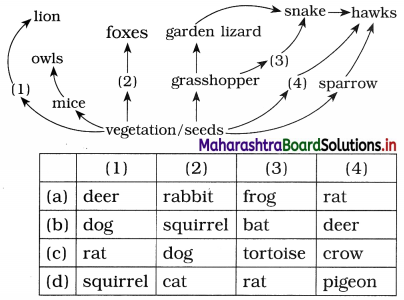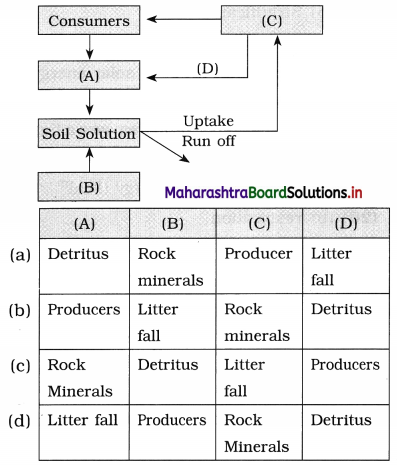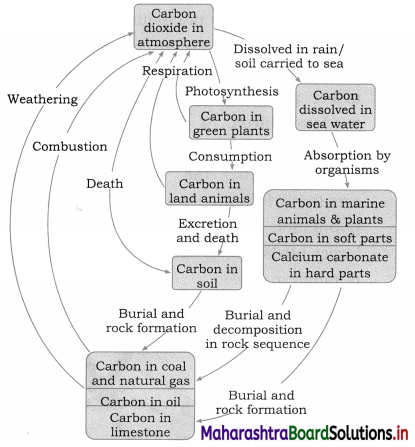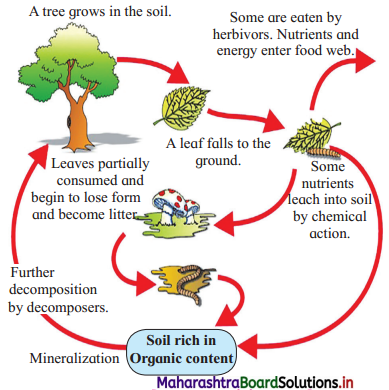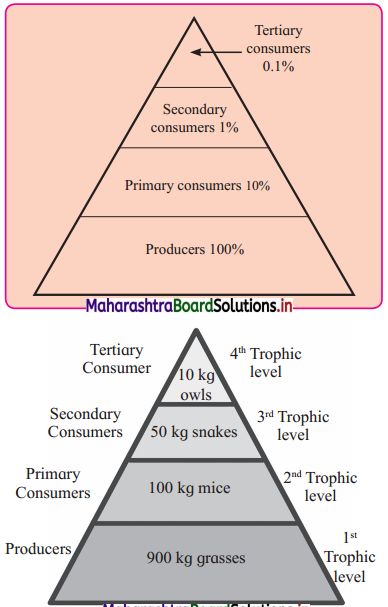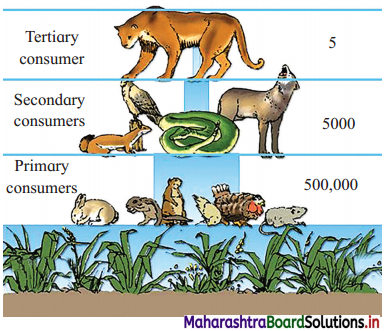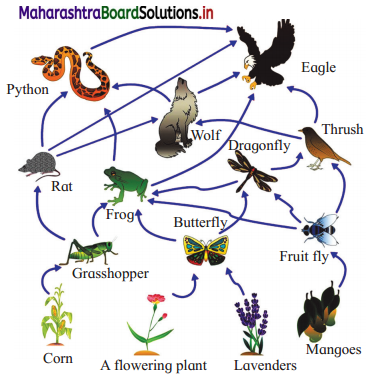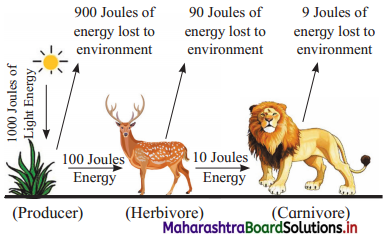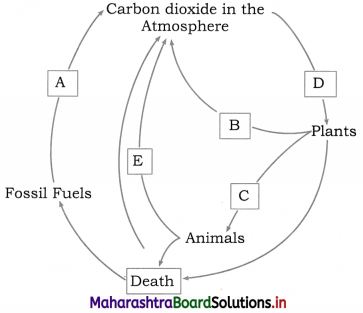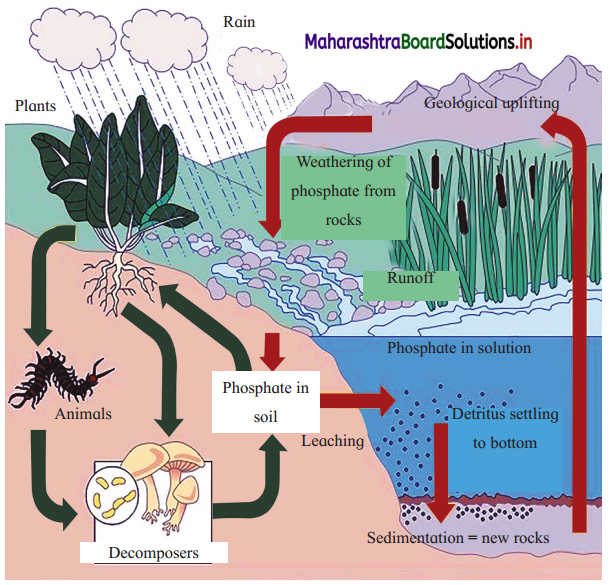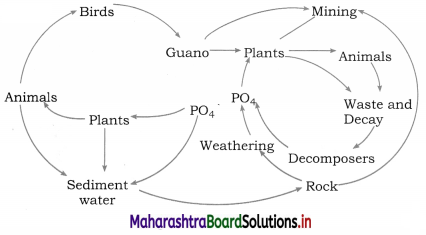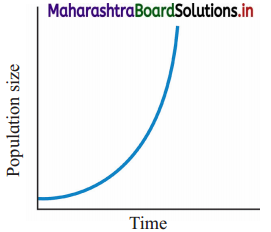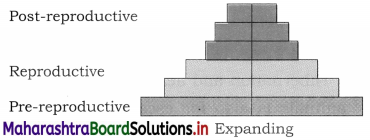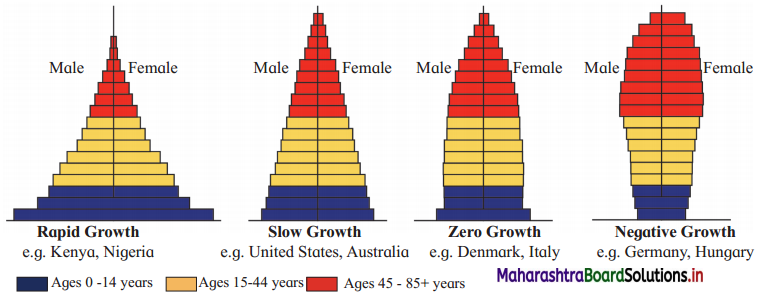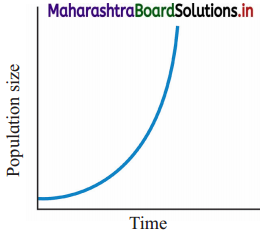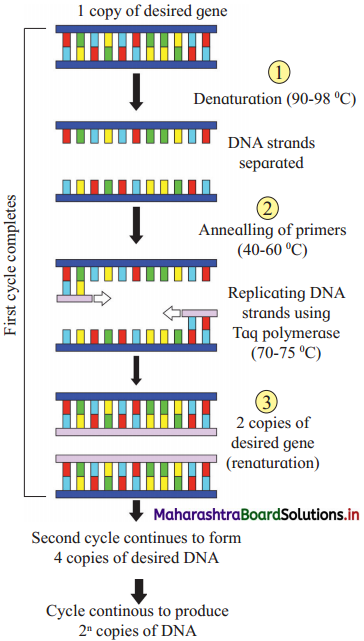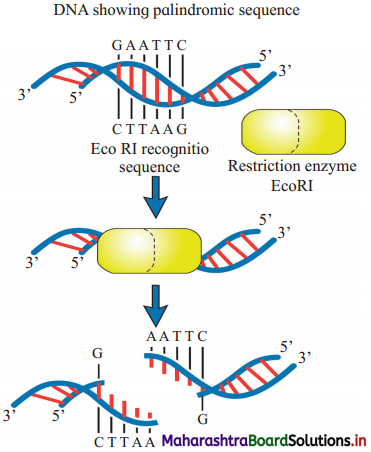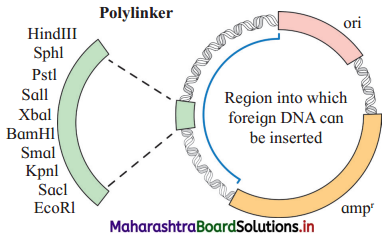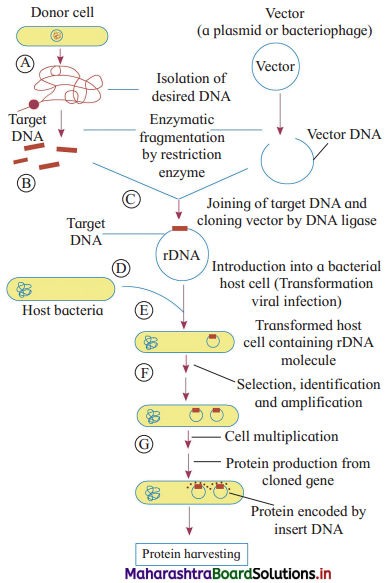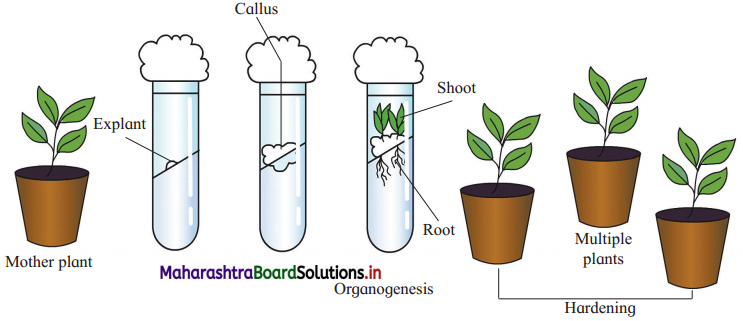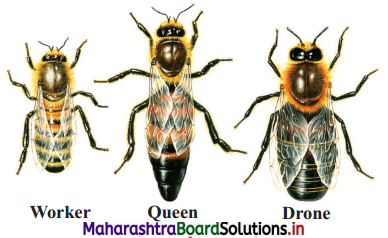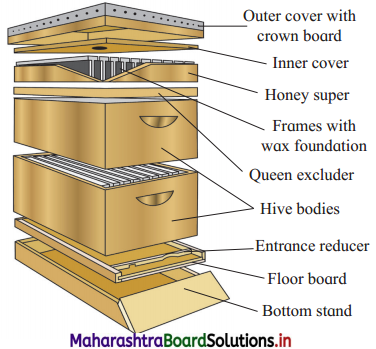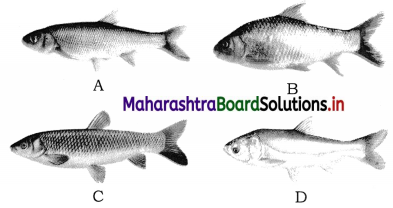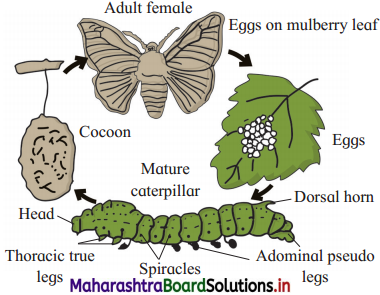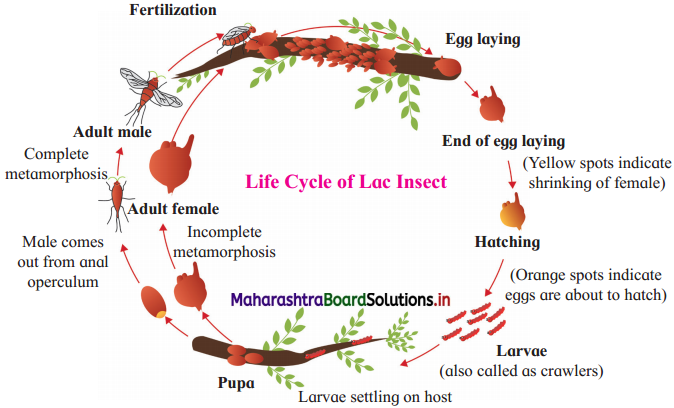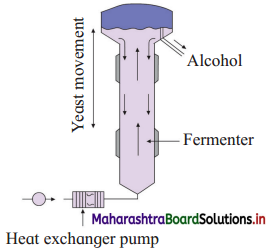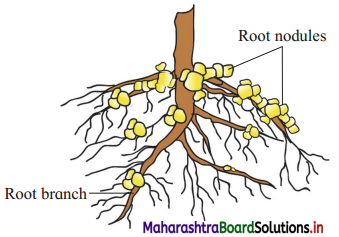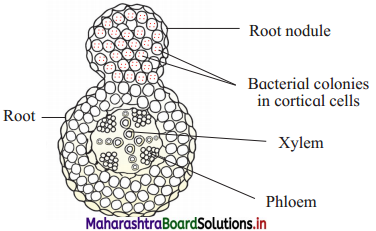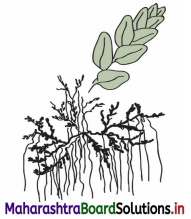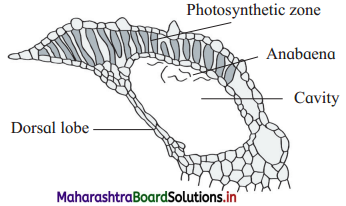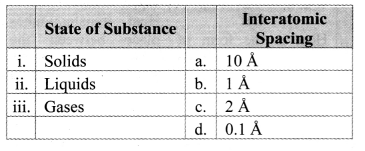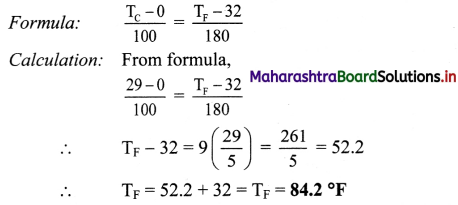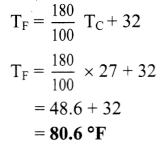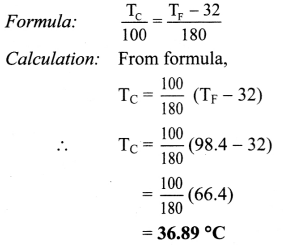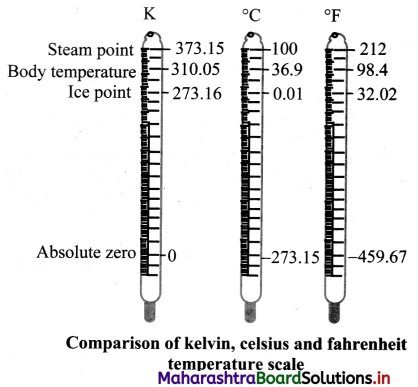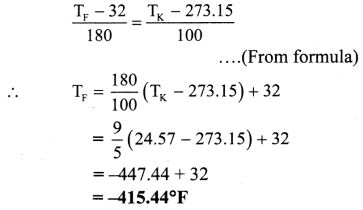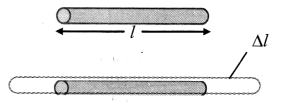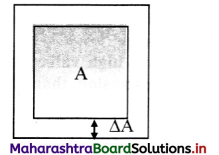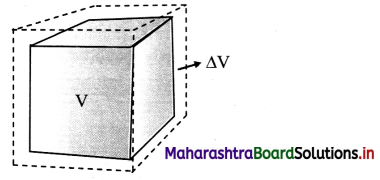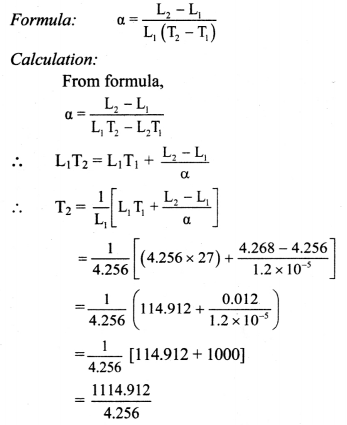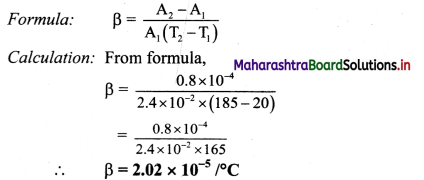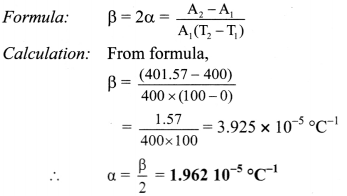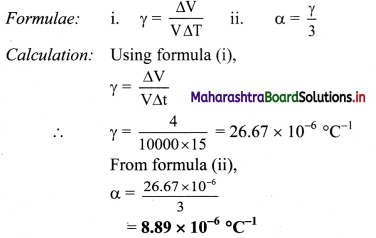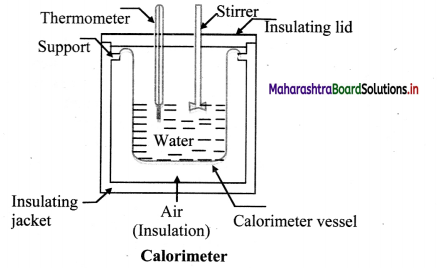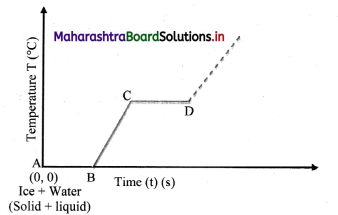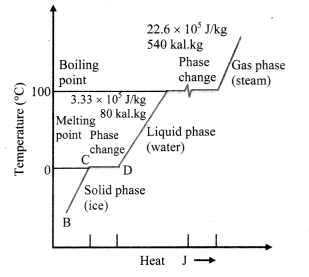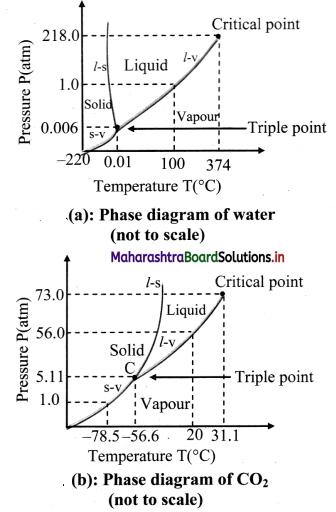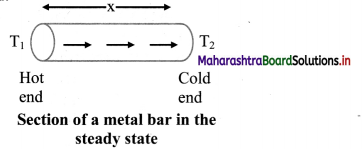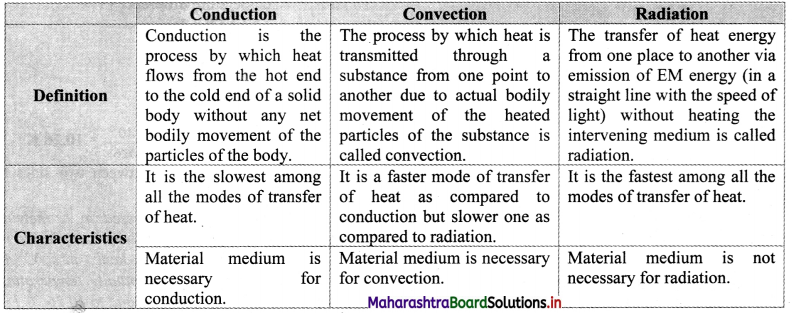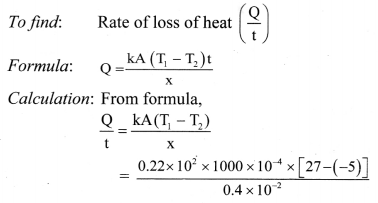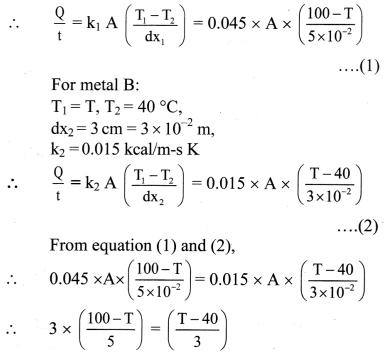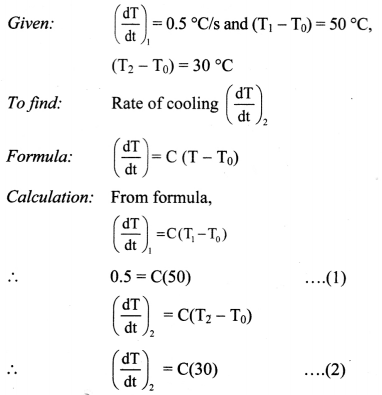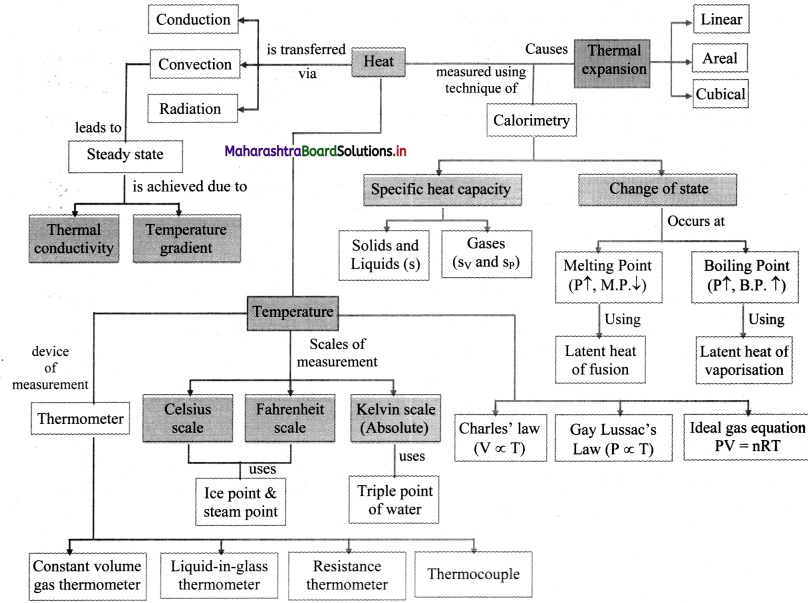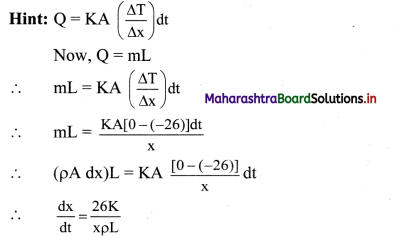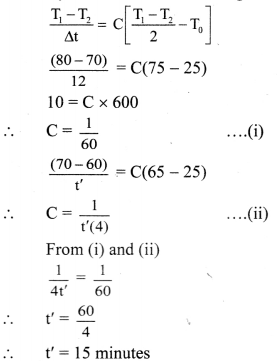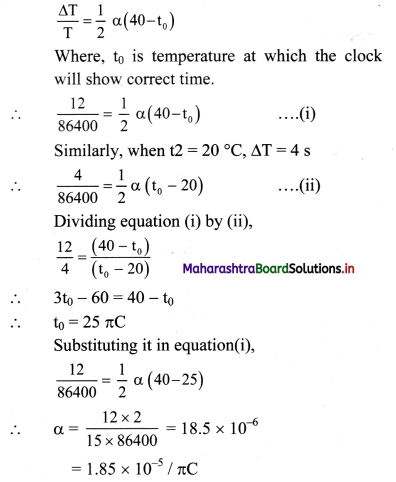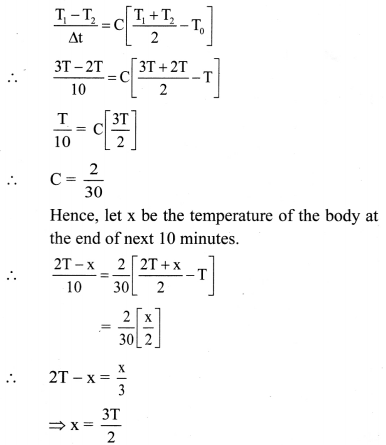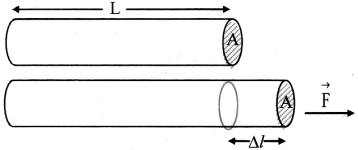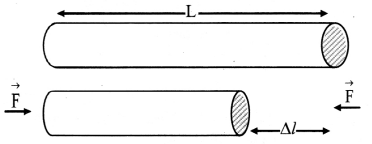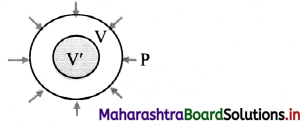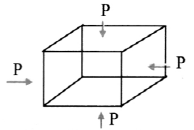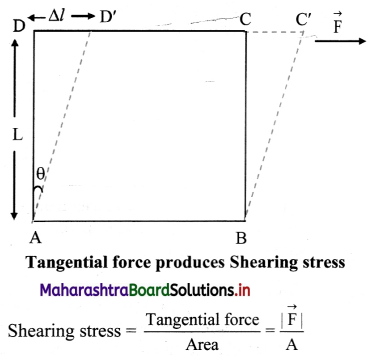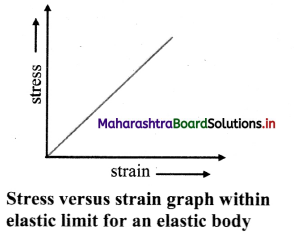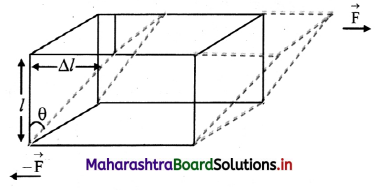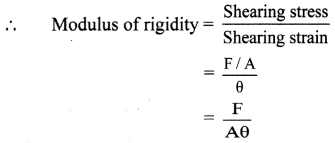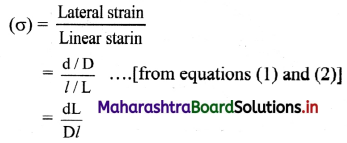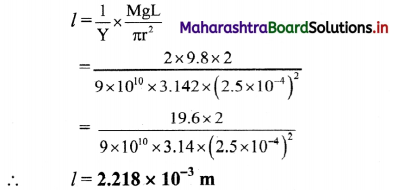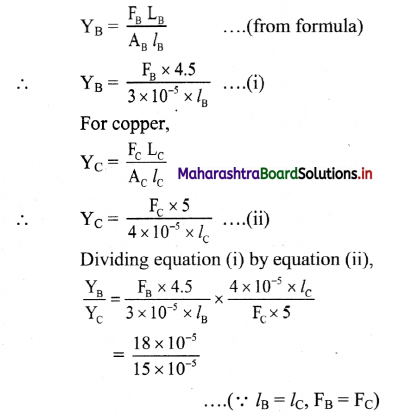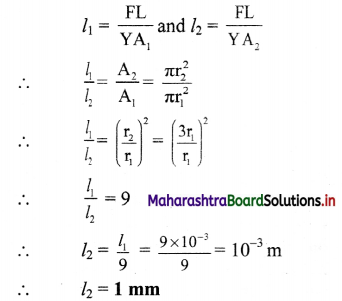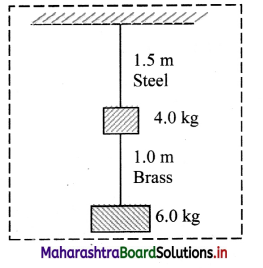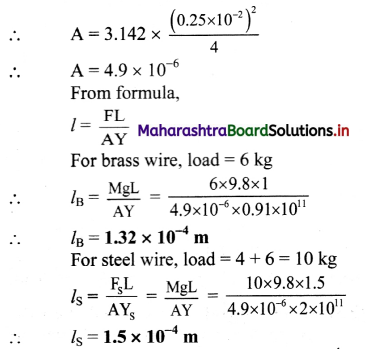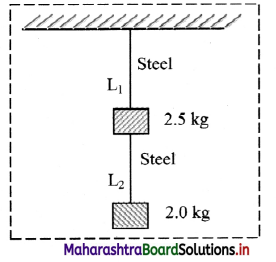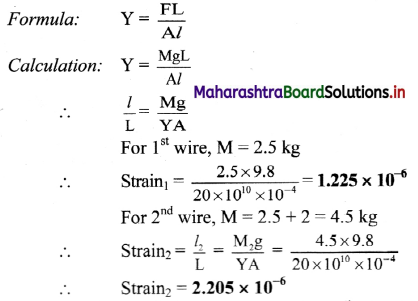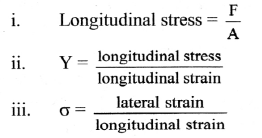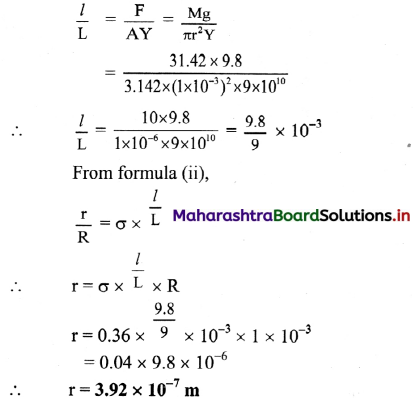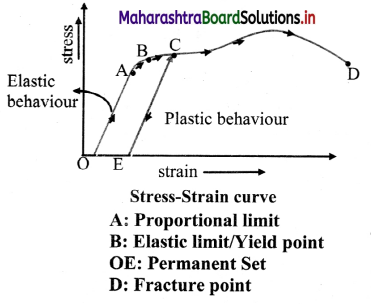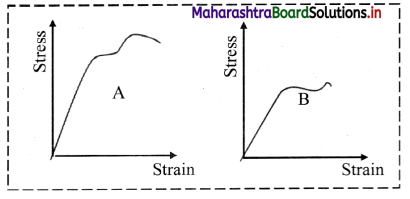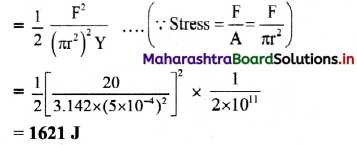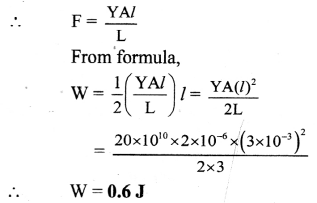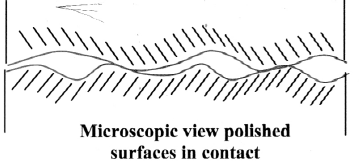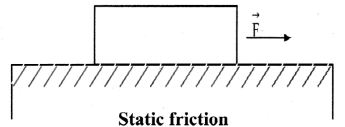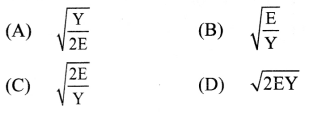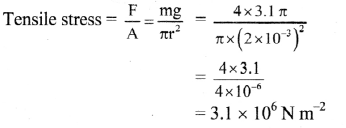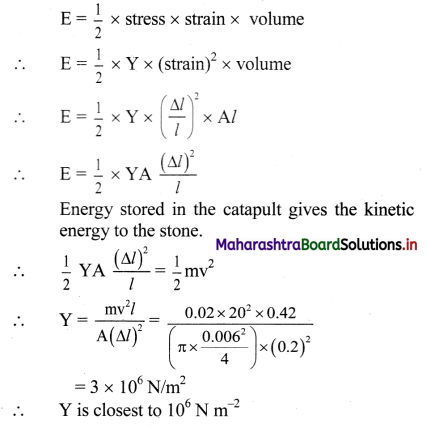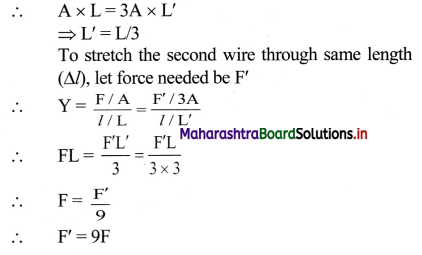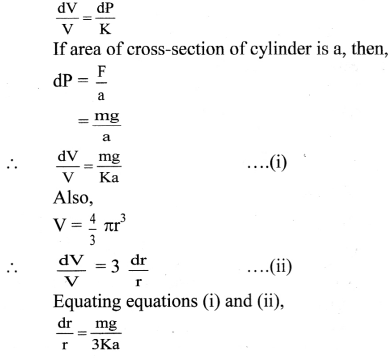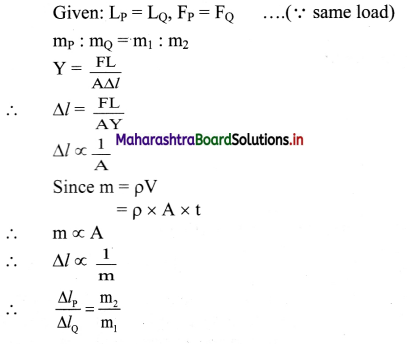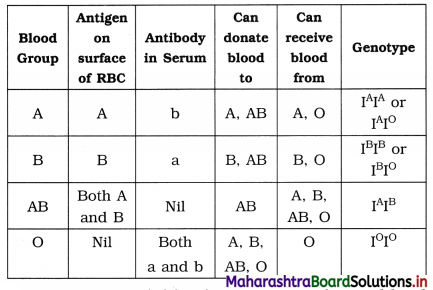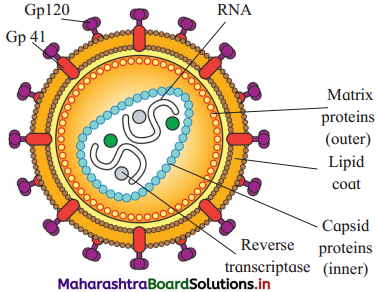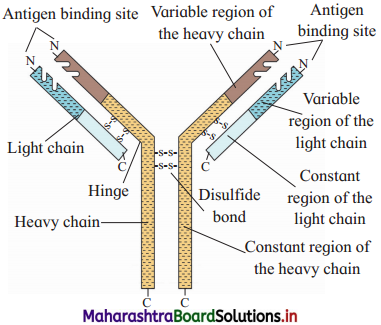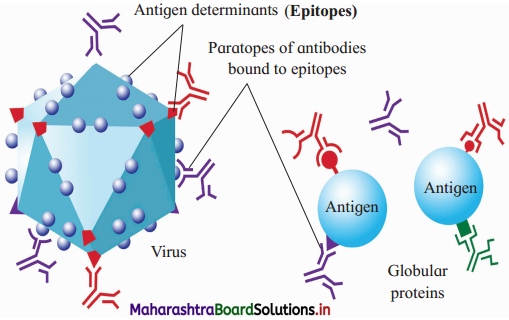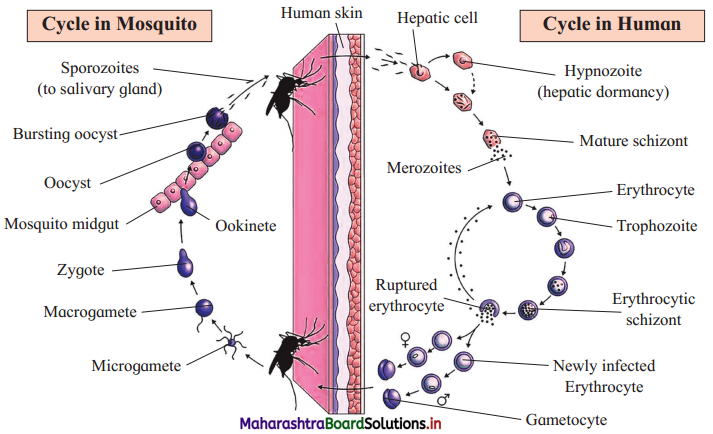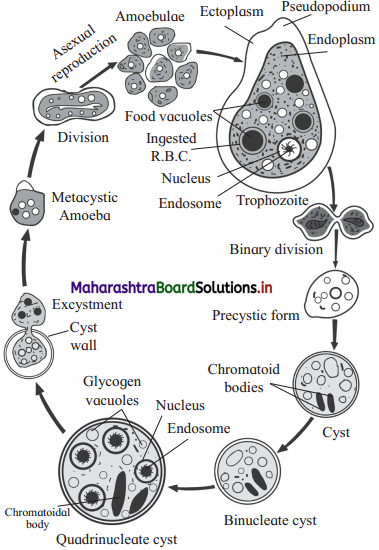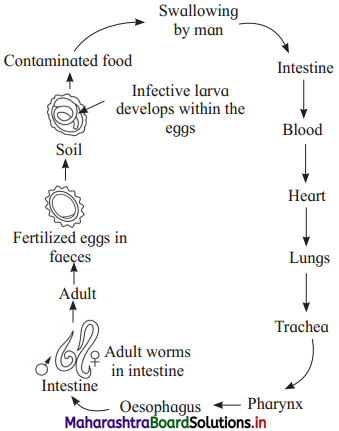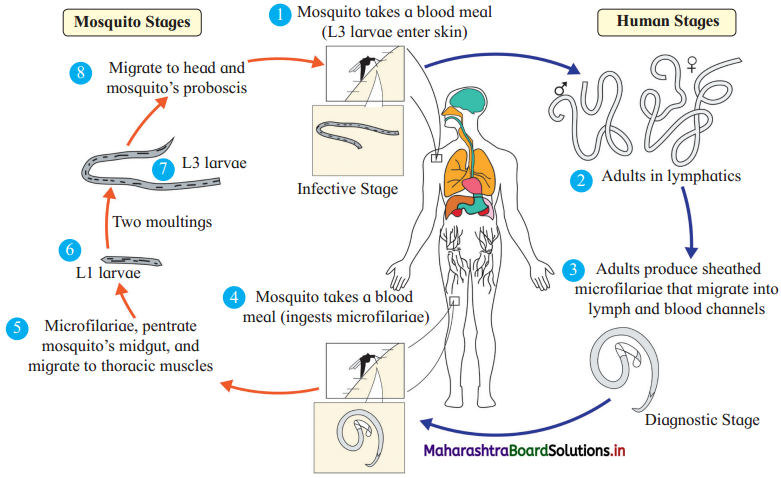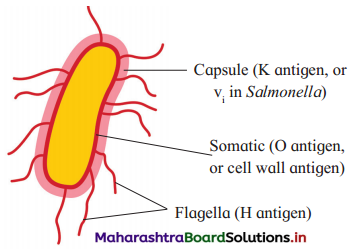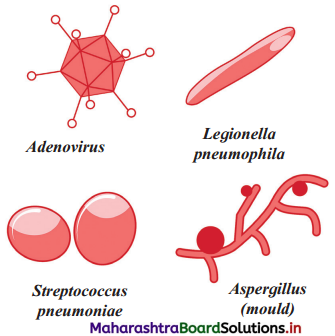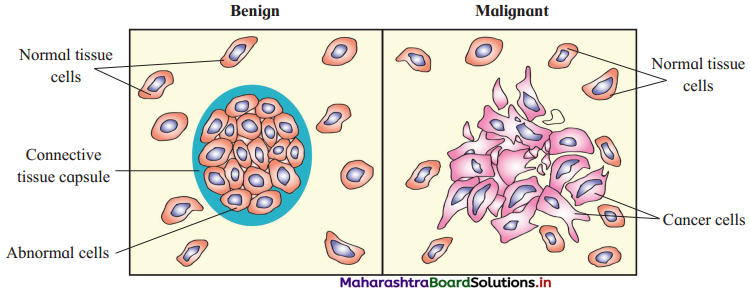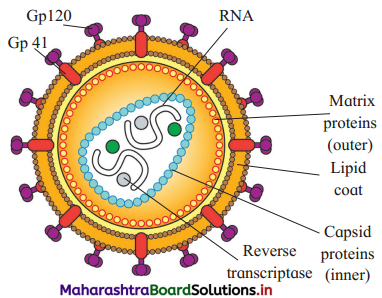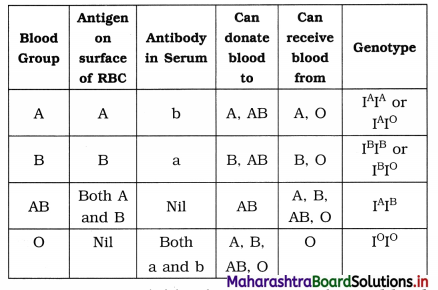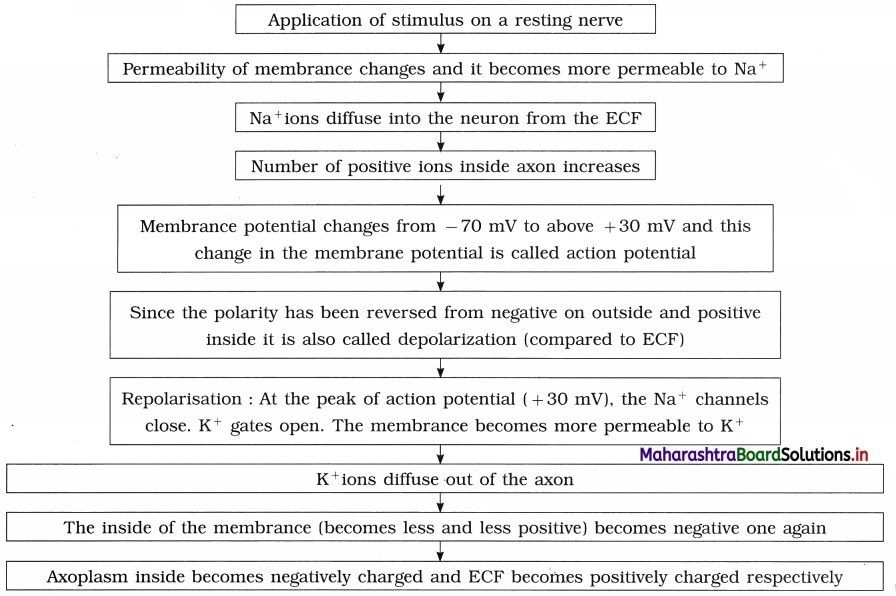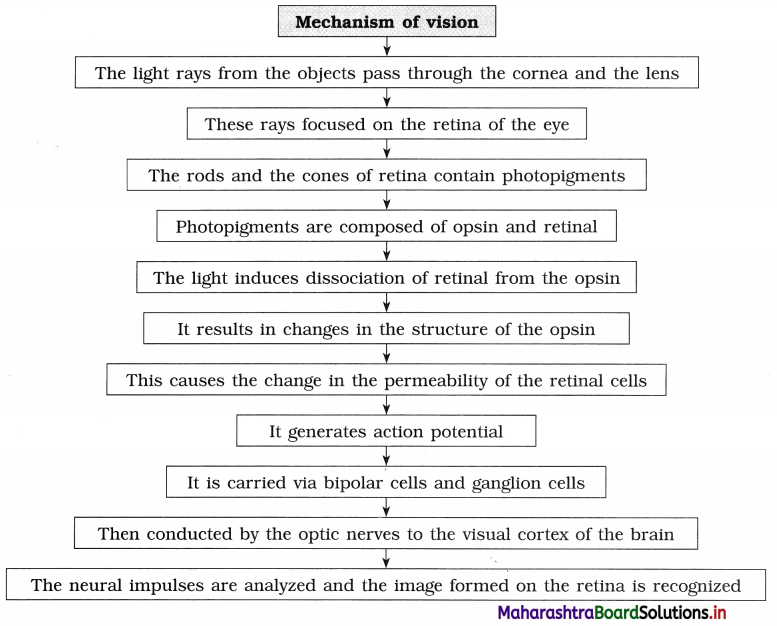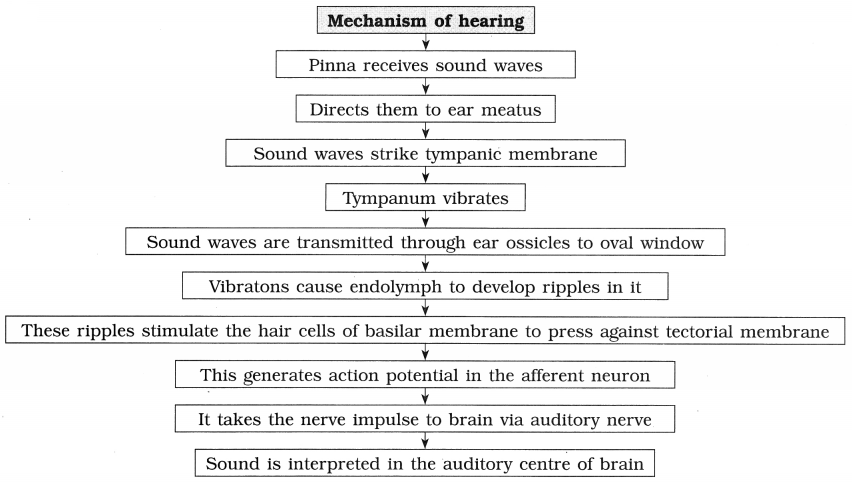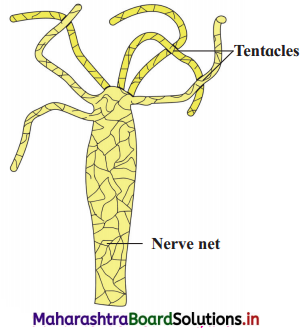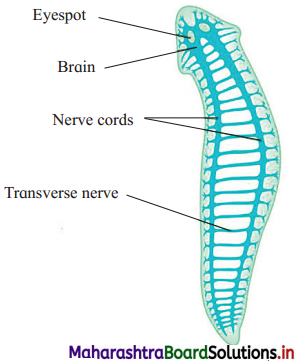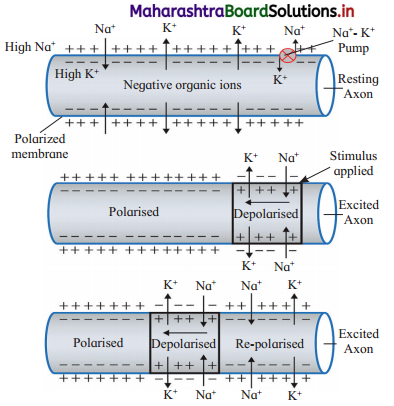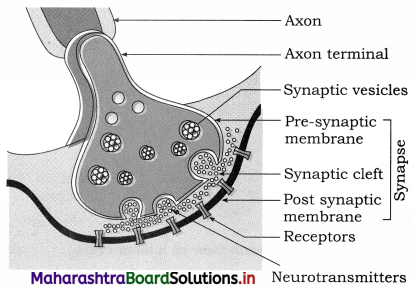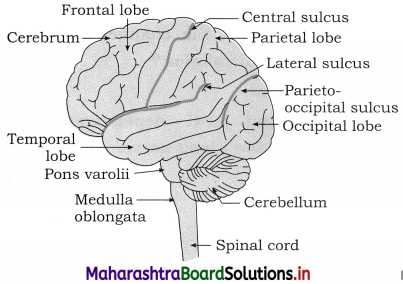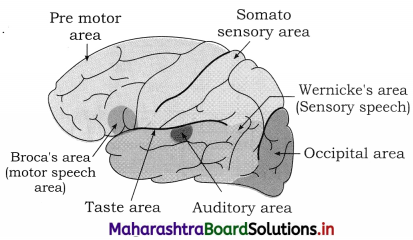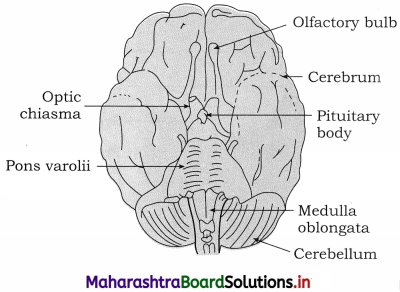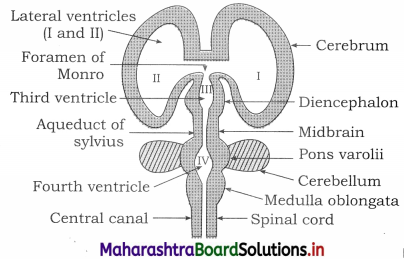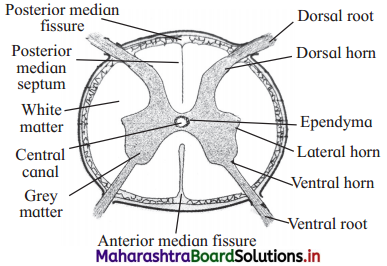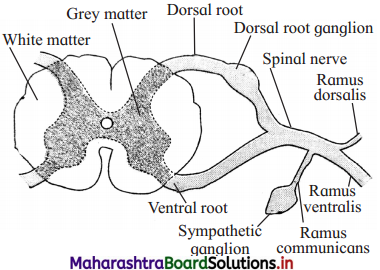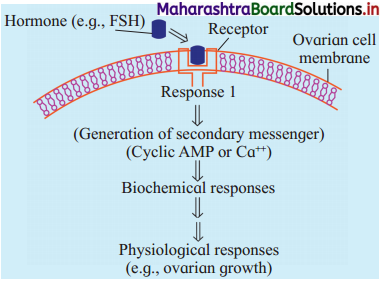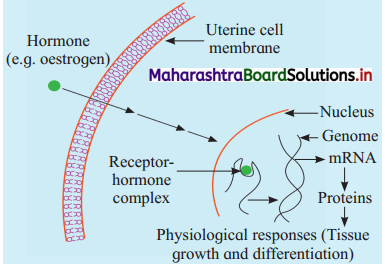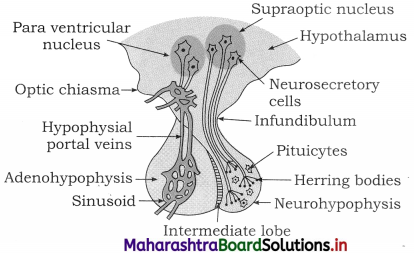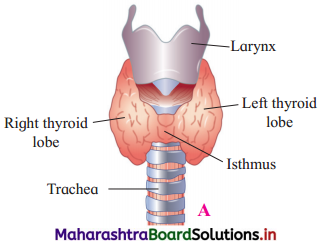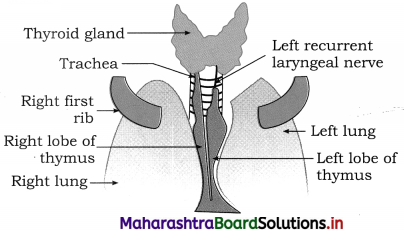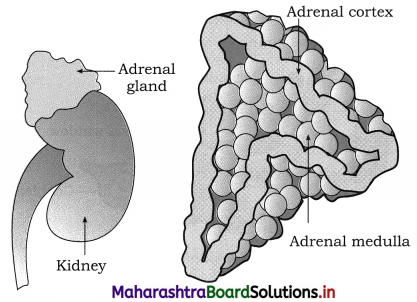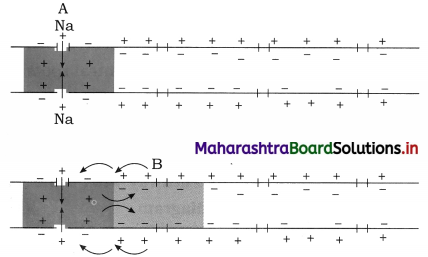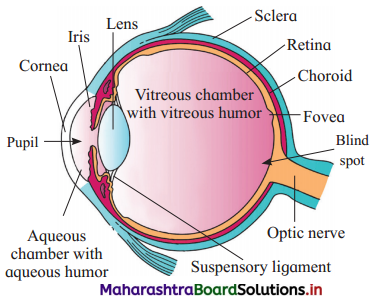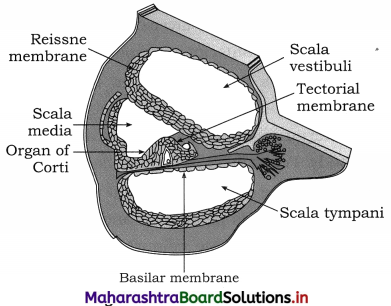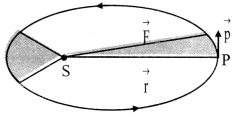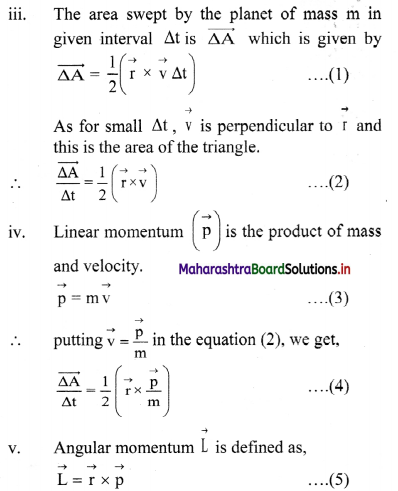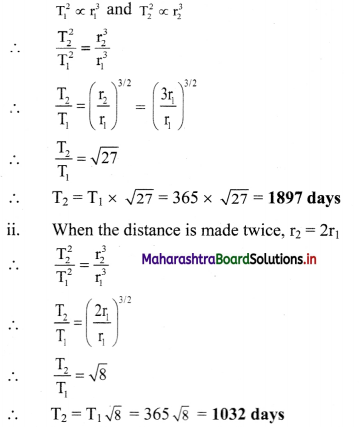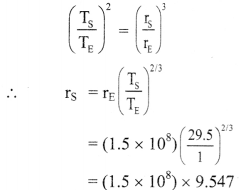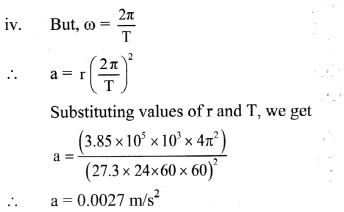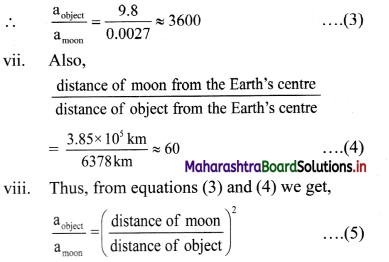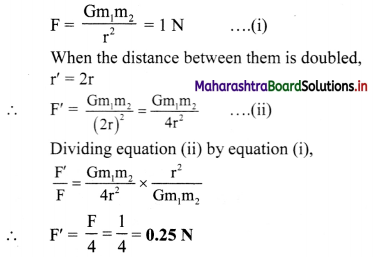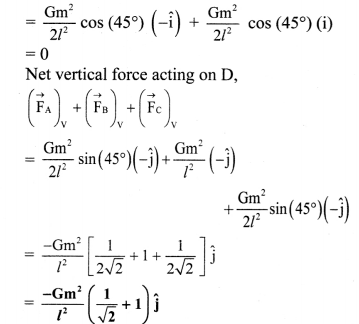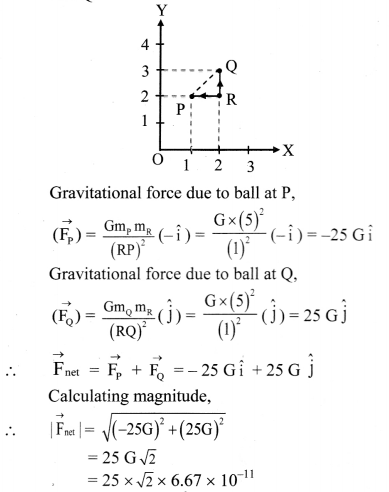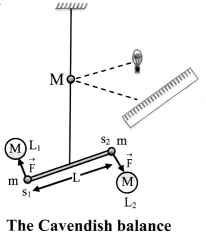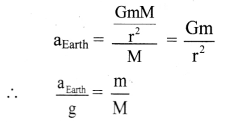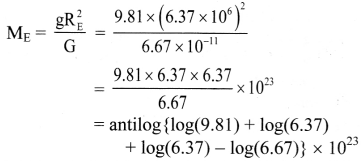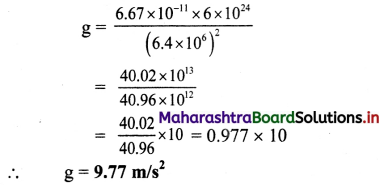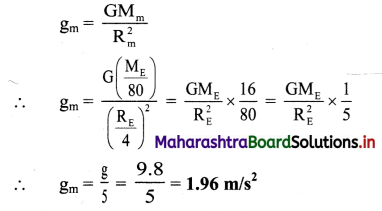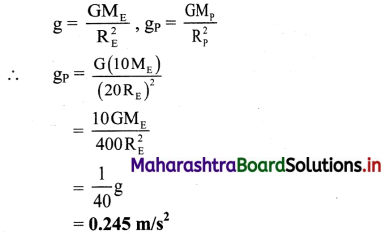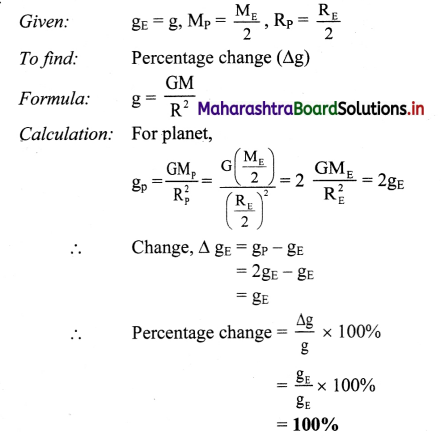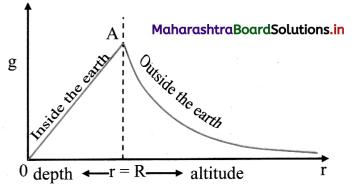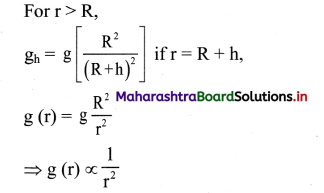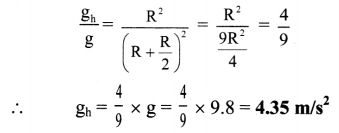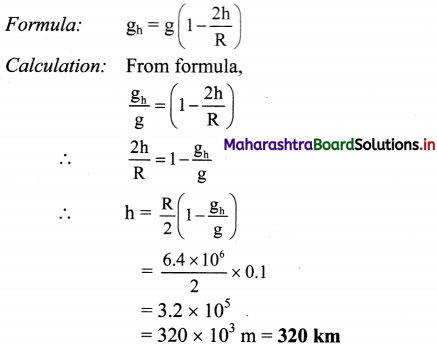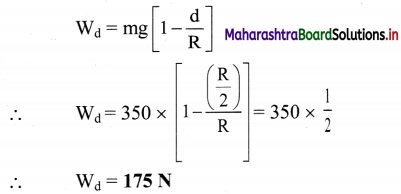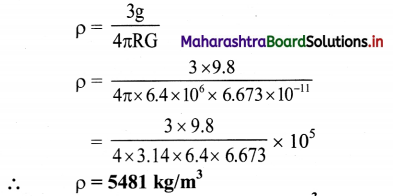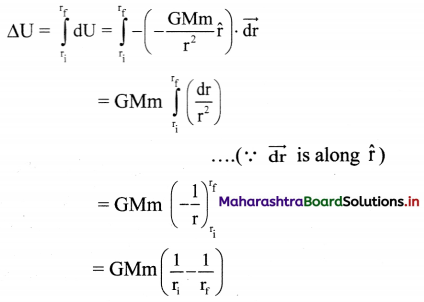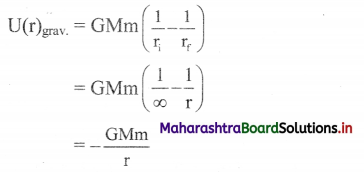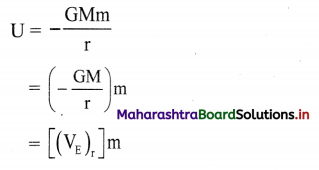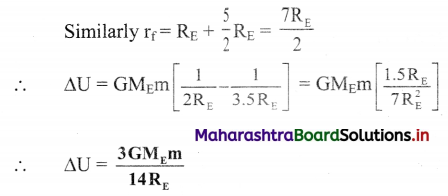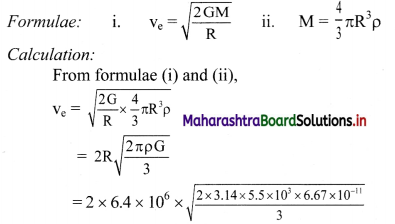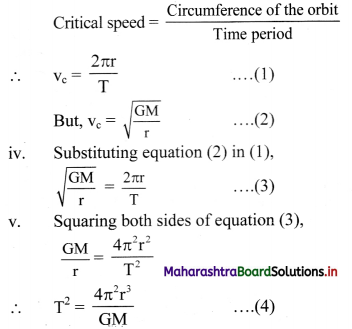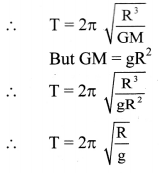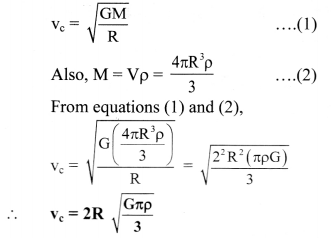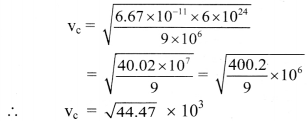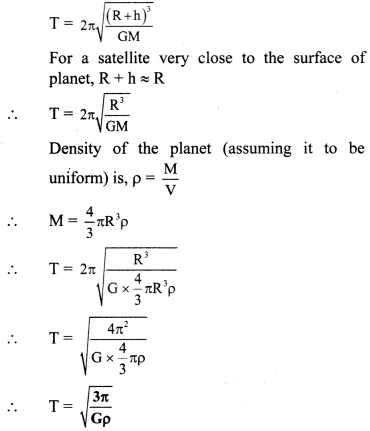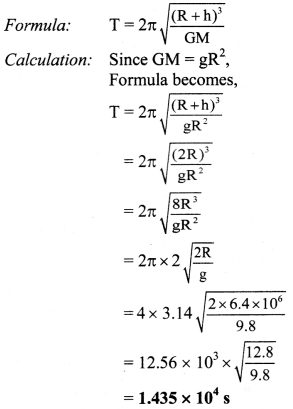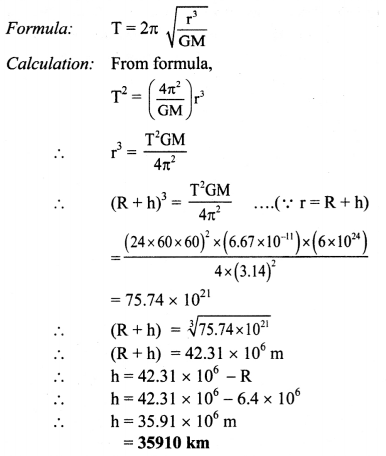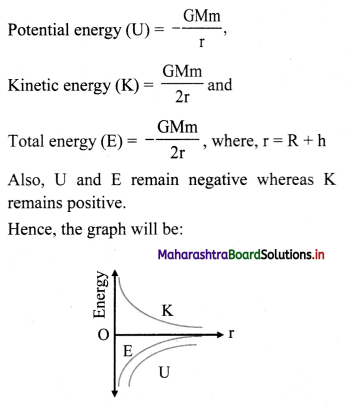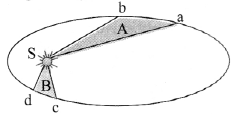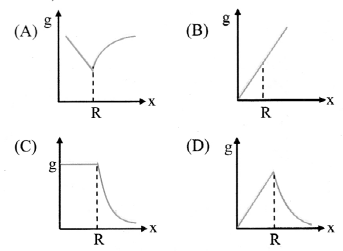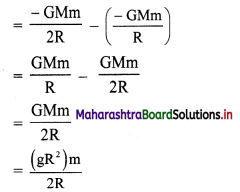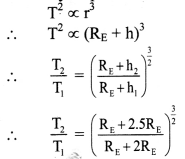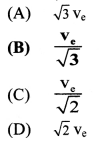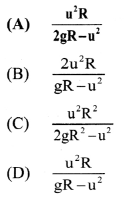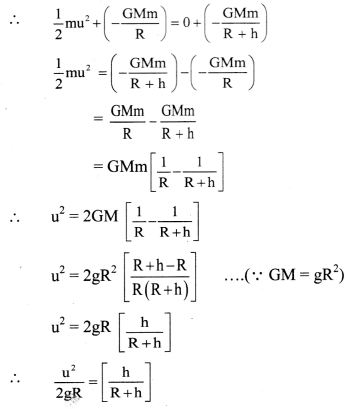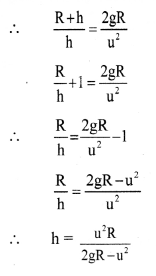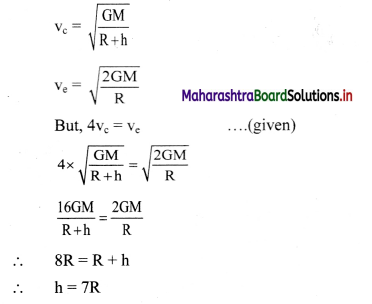Balbharti Maharashtra State Board 12th Biology Important Questions Chapter 15 Biodiversity, Conservation and Environmental Issues Important Questions and Answers.
Maharashtra State Board 12th Biology Important Questions Chapter 15 Biodiversity, Conservation and Environmental Issues
Multiple choice questions
Question 1.
Diversity in living beings is due to ……………………
(a) mutation
(b) long term evolutionary change
(c) gradual change
(d) short term evolutionary change
Answer:
(b) long term evolutionary change
Question 2.
Diversification of plant life appeared ……………………
(a) due to long periods of evolutionary changes
(b) due to abrupt mutations
(c) suddenly on the earth
(d) by seed dispersal
Answer:
(a) due to long periods of evolutionary changes
![]()
Question 3.
Rauwolfia vomitoria shows …………………. in terms of the potency and concentration of reserpine that it produces.
(a) genetic diversity
(b) species diversity
(c) ecological diversity
(d) biodiversity
Answer:
(a) genetic diversity
Question 4.
Which of the following country has the greatest ecosystem diversity?
(a) Norway
(b) India
(c) Sweden
(d) Finland
Answer:
(b) India
Question 5.
India has deserts, rain forests, mangroves, coral reefs, wetlands, estuaries and alpine meadows. What kind of biodiversity is depicted in this statement?
(a) Geographic diversity
(b) Species diversity
(c) Ecological diversity
(d) Genetic diversity
Answer:
(c) Ecological diversity
Question 6.
Biodiversity and its conservation are vital environmental issues of international concern because ……………….
(a) it fetches more economic progress and development
(b) it can attract more international tourists
(c) biodiversity and its conservation is essential for our survival and well-being of earth
(d) all the animals and plants would be extinct if not taken care of
Answer:
(c) biodiversity and its conservation is essential for our survival and well-being of earth
Question 7.
Biodiversity of geographical region represents …………………….
(a) endangered species found in the region
(b) the diversity in the organisms living in the region
(c) genetic diversity present in the dominant species of the region
(d) species endemic to the region
Answer:
(b) the diversity in the organisms living in the region
Question 8.
The latitudinal gradient in the pattern of biodiversity shows that …………………
(a) species diversity decreases as one moves away from the equator towards the poles
(b) species diversity increases as we move away from the equator towards the poles
(c) species diversity decreases as we move away from the poles towards the equator
(d) species diversity remains constant as we move away from the poles towards the equator
Answer:
(a) species diversity decreases as one moves away from the equator towards the poles
Question 9.
Which of the following is the possible cause for greater biodiversity in the tropics?
(a) Higher productivity due to more solar energy.
(b) Lesser technological development.
(c) Traditional and religious practices for conservation of nature.
(d) Lesser natural calamities.
Answer:
(a) Higher productivity due to more solar energy.
Question 10.
Log S = log C = Z log A is the equation that depicts relation between ………………….
(a) population density and time
(b) population growth and time
(c) species richness and area
(d) area and species migrations
Answer:
(c) species richness and area
Question 11.
Regression coefficient is shown by ……………………….. in the Humboldt’s equation [Log S = log C + Z log A] of species richness.
(a) S
(b) Z
(c) A
(d) C
Answer:
(b) Z
Question 12.
Choose an incorrect statement:
(a) The relation between species richness and area for a wide variety of taxa turns out to be a rectangular hyperbola.
(b) The relation between species richness and area on a logarithmic scale, the relationship is a straight line.
(c) For the species-area relationships among very large areas like the entire continents, the slope of the line appears to be much steeper.
(d) Value of Z always keep on changing for every taxonomic group or the region.
Answer:
(d) Value of Z always keep on changing for every taxonomic group or the region.
Question 13.
Who observed that within a region, species richness increased with increasing explored area, to a certain limit ?
(a) Robert May
(b) John Muir
(c) Alexander von Humboldt
(d) David Tilman
Answer:
(c) Alexander von Humboldt
Question 14.
Who was Alexander von Humboldt ?
(a) American Population biologist
(b) German naturalist and geographer
(c) Dutch Botanist
(d) French Zoologist
Answer:
(b) German naturalist and geographer
Question 15.
Which is the most well-known pattern of biodiversity ?
(a) Species-Area relationship
(b) Latitudinal gradient
(c) Longitudinal gradient
(d) Altitudinal gradient
Answer:
(b) Latitudinal gradient
Question 16.
Name the scientist who studied ecosystem by using analogy of ‘The rivet popper hypothesis’.
(a) John Muir
(b) Alexander von Humboldt
(c) Robert May
(d) Paul Ehrlich
Answer:
(d) Paul Ehrlich
Question 17.
When is the serious threat developed to an ecosystem ?
(a) When any one or two species become extinct.
(b) When key species that drive ecosystem become extinct.
(c) When native species are replaced by exotic species.
(d) When human beings take conservation measures.
Answer:
(b) When key species that drive ecosystem become extinct.
Question 18.
Which animal group is more vulnerable to the process of extinction ?
(a) Amphibian
(b) Reptilia
(c) Aves
(d) Mammalia
Answer:
(a) Amphibian
Question 19.
Deforestation does not lead to
(a) quick nutrient cycling
(b) soil erosion
(c) alteration of local weather condition
(d) destruction of natural habitat of wild animals
Answer:
(a) quick nutrient cycling
Question 20.
What are the ‘The Evil Quartet’ for the loss of biodiversity ?
(a) Habitat loss and fragmentation, Over exploitation, Alien species invasion, Co-extinctions
(b) Pollution, Global warming, Increasing population, Reclamation
(c) Greenhouse effect, Sea level rise, Air pollution, Deforestation
(d) Agriculture, Industrialization, Urbanization, Constructing transport facilities
Answer:
(a) Habitat loss and fragmentation, Over exploitation, Alien species invasion, Co-extinctions
Question 21.
Introduction of which aquaculture fish has created threat to the indigenous catfishes in Indian rivers ?
(a) Clarias gariepinus
(b) Arius sps.
(c) Heteropneustus Jossilis
(d) Pangasius pangasius
Answer:
(a) Clarlas gariepinus
Question 22.
The phenomena of co-extinction is observed when ………………….
(a) host fish gets extinct, its parasites also meet the same fate
(b) parasites are killed, the host too suffers
(c) host-parasite relationship is terminated
(d) parasites overpower the host
Answer:
(a) host fish gets extinct, its parasites also meet the same fate
Question 23.
Which of the following suffers due to co-extinction ?
(a) Selection of mates for reproduction
(b) Plant-pollinator mutualism
(c) Feeding preferences
(d) Prey-predator relationships
Answer:
(b) Plant-pollinator mutualism
Question 24.
The region with very high levels of species richness is called
(a) Biodiversity hotspot
(b) National Park
(c) Sanctuary
(d) Biosphere
Answer:
(a) Biodiversity hotspot
Question 25.
Which of the following does not offer ex-situ conservation to the flora and fauna ?
(a) Zoological parks
(b) Botanical gardens
(c) Sanctuaries
(d) Gene banks
Answer:
(c) Sanctuaries
Question 26.
Gametes of threatened species can be preserved in viable and fertile condition for long periods using ………………… techniques.
(a) cryopreservation
(b) tissue culture
(c) formalin preservation
(d) DNA hybridization
Answer:
(a) cryopreservation
Question 27.
Find the odd one out
(a) Seed banks
(b) Gene banks
(c) In vitro fertilization
(d) Electrophoresis
Answer:
(d) Electrophoresis
Question 28.
Chipko andolan movement is to protect the ………………….
(a) flora
(b) fauna
(c) trees
(d) rivers
Answer:
(c) trees
Question 29.
Hotspots are the examples of …………………..
(a) in-situ conservation
(b) ex-situ conservation
(c) wildlife protection
(d) water conservation
Answer:
(a) in-situ conservation
Question 30.
Which of the following is not the outcome of preserving biodiversity ?
(a) To maintain the ecological processes.
(b) To build national economy.
(c) To study life in its natural habitats.
(d) To disturb ecological balance.
Answer:
(d) To disturb ecological balance.
Question 31.
Which of the following is not an example of ex-situ conservation of biodiversity ?
(a) Botanical gardens
(b) Culture collections
(c) Zoological parks
(d) Colleges teaching courses on biodiversity
Answer:
(d) Colleges teaching courses on biodiversity
Question 32.
Cryopreservation of gametes of threatened species in viable and fertile condition can be referred to as ………………..
(a) In-situ cryo-conservation of biodiversity
(b) In-situ conservation of biodiversity
(c) Advanced ex-situ conservation of biodiversity
(d) In-situ conservation by sacred groves
Answer:
(c) Advanced ex-situ conservation of biodiversity
Question 33.
In which of the following, both pairs have correct combination ?
(a) In-situ conservation : Tissue culture Ex-situ conservation : Sacred groves
(b) In-situ conservation : National Park Ex-situ conservation : Botanical Garden
(c) In-situ conservation : Cryopreservation Ex-situ conservation : Wildlife Sanctuary
(d) In-situ conservation : Seed Bank Ex-situ conservation : National Park
Answer:
(b) In-situ conservation : National Park, Ex-situ conservation : Botanical Garden
Question 34.
The organization which publishes the Red List of species is …………………
(a) UNEP
(b) WWF
(c) ICFRE
(d) IUCN
Answer:
(d) IUCN
Question 35.
The World Biodiversity Day is observed on ………………..
(a) 22nd April
(b) 5th June
(c) 3rd March
(d) 22nd May
Answer:
(d) 22nd May
Question 36.
Which of the following expanded form of the given acronyms is correct?
(a) IPCC = International Panel for Climate Change.
(b) UNEP = United Nations Environment Policy.
(c) EPA = Environmental Pollution Agency.
(d) IUCN = International Union for Conservation of Nature and Natural Resources.
Answer:
(d) IUCN = International Union for Conservation of Nature and Natural Resources
Question 37.
The Air Prevention and Control of Pollution Act came into force in …………………
(a) 1975
(b) 1981
(c) 1985
(d) 1990
Answer:
(b) 1981
Question 38.
Which is the most dangerous and common kind of environmental pollution ?
(a) Air
(b) Water
(c) Noise
(d) Radioactive
Answer:
(a) Air
![]()
Question 39.
How does carbon monoxide, a poisonous gas emitted by automobiles, prevent transport of oxygen into the body tissues ?
(a) By destroying haemoglobin.
(b) By forming a stable compound with haemoglobin.
(c) By obstructing the reaction of oxygen with haemoglobin.
(d) By changing oxygen into carbon dioxide.
Answer:
(b) By forming a stable compound with haemoglobin
Question 40.
A scrubber in the exhaust of a chemical industrial plant removes
(a) gases like ozone and methane
(b) particulate matter of the size 2.5 micrometer or less
(c) gases like sulphur dioxide
(d) particulate matter of the size 5 micrometer or above
Answer:
(c) gases like sulphur dioxide
Question 41.
Which of the following can be considered as the most hazardous effect of air pollution ?
(a) Reduction in the growth and yield of the crop.
(b) Premature death of the plants.
(c) Effect on the monuments.
(d) Deleterious effects on the respiratory system of all animals.
Answer:
(d) Deleterious effects on the respiratory system of all animals.
Question 42.
Harmful effects of air pollution does not depend on the
(a) concentration of pollutants
(b) duration of exposure
(c) the type of organism
(d) time of the day
Answer:
(d) time of the day
Question 43.
Which equipment is most widely used for filtering out particulate matter ?
(a) Scrubber
(b) Electrostatic precipitator
(c) Filters
(d) Centrifuges
Answer:
(b) Electrostatic precipitator
Question 44.
What is the percentage of particulate matter removed from the thermal power exhaust with the help of electrostatic precipitator ?
(a) 25%
(b) 50%
(c) 80%
(d) 99%
Answer:
(d) 99%
Question 45.
Scrubber removes gases like
(a) Ozone
(b) Carbon dioxide
(c) Sulphur dioxide
(d) Methane
Answer:
(c) Sulphur dioxide
Question 46.
Which part of the electrostatic precipitator is maintained at several thousand volts ?
(a) Collection plates
(b) Electrode wires
(c) Corona
(d) Water line spray
Answer:
(b) Electrode wires
Question 47.
Which particles are responsible for causing the greatest harm to human health ?
(a) Particulates with size 1.00 micrometres in diameter.
(b) Particulates with size of 10 mm.
(c) Particulates with size 2.5 micrometres or less in diameter.
(d) Particulates with size of 100 micrometres in diameter
Answer:
(c) Particulates with size 2.5 micrometres or less in diameter.
Question 48.
According to Central Pollution Control Board (CPCB), which particulate size in diameter (in micrometers) of the air pollutants is responsible for greatest harm to human health ?
(a) 2.5 or less
(b) 1.5 or less
(c) 1.0 or less
(d) Between 2.5-5.3
Answer:
(a) 2.5 or less
Question 49.
When the exhaust passes through the catalytic converters, what happens to the unburnt hydrocarbons ?
(a) They are converted to oxygen and water.
(b) They are converted to energy to run the car.
(c) They are converted to carbon dioxide and water.
(d) They are converted to carbonates.
Answer:
(c) They are converted to carbon dioxide and water.
Question 50.
When the exhaust passes through the catalytic converters, what happens to the carbon monoxide and nitric oxide ?
(a) They are changed to carbon dioxide and nitrogen gas, respectively.
(b) They are changed to oxygen and carbon monoxide respectively.
(c) They are converted into hydrocarbons.
(d) They remain unchanged.
Answer:
(a) They are changed to carbon dioxide and nitrogen gas, respectively.
Question 51.
Motor vehicles equipped with catalytic converter should use unleaded petrol because
(a) lead causes pollution
(b) lead in the petrol inactivates the catalyst
(c) lead makes automobile machinery inefficient
(d) lead causes more consumption of petrol
Answer:
(b) lead in the petrol inactivates the catalyst
Question 52.
Which expensive metals are fitted into catalytic converters of the automobiles for reducing emission of poisonous gases ?
(a) Platinum-palladium and rhodium
(b) Silver, Gold
(c) Platinum and Gold
(d) Rhodium and Silver
Answer:
(a) Platinum-palladium and rhodium
Question 53.
Which part of the electrostatic precipitator attract the charged dust particles ?
(a) Collection plates
(b) Electrode wires
(c) Corona
(d) Dust particles
Answer:
(a) Collection plates
Question 54.
Two thirds of sulphur dioxides are produced by
(a) heating plants
(b) industrial processes
(c) automobile traffic
(d) electric power plants
Answer:
(d) electric power plants
Question 55.
Which is the worst polluted city among the world with respect to air pollution ?
(a) New York
(b) Tokyo
(c) New Delhi
(d) Dubai
Answer:
(c) New Delhi
Question 56.
Which are the other equivalent norms to Euro-II norms ?
(a) Bharat stage II
(b) Euro-III
(c) Euro-IV
(d) Air (Prevention and Control of Pollution) Act
Answer:
(a) Bharat stage II
Question 57.
Which of the following statements is inaccurate ?
(a) All automobiles should have Euro-III emission norm compliant automobiles and fuels by 2010.
(b) All automobiles and fuel-petrol and diesel – were to have met the Euro-III emission specifications in major 11 cities from April 1, 2005.
(c) All automobiles should have to meet the Euro-IV norms by April 1, 2010.
(d) Quality of Delhi air has significantly deteriorated due to all the above norms.
Answer:
(d) Quality of Delhi air has significantly deteriorated due to all the above norms.
Question 58.
What was observed within a period of 1997 and 2005 in Delhi as regards to air quality ?
(a) There was net increase in all the types of air pollutants.
(b) Delhi became totally pollution-free during this period only.
(c) There was substantial fall in concentrations of CO2 and SO2.
(d) There was decrease in the concentration of H2S and CO.
Answer:
(c) There was substantial fall in concentrations of CO2 and SO2.
Question 59.
When was Air (Prevention and Control of Pollution) Act amended to include noise as an air Pollutant ?
(a) 1981
(b) 1984
(c) 1986
(d) 1987
Answer:
(d) 1987
Question 60.
Which of the following is not the measure to reduce the noise pollution ?
(a) Delimitation of horn-free zones around hospitals and schools.
(b) Permissible sound-levels of crackers and of loudspeakers.
(c) Time limits after which loudspeakers cannot be played.
(d) Complete ban on processions playing loud percussion instruments.
Answer:
(d) Complete ban on processions playing loud percussion instruments.
Question 61.
How does CO affect plant respiration ?
(a) By yellowing leaves
(b) By closing stomatal openings
(c) By reacting with cytochrome oxidase enzyme system
(d) By causing defoliation and leaf lesions
Answer:
(c) By reacting with cytochrome oxidase enzyme system
Question 62.
Acid rains are produced by
(a) excess emissions of NO2 and SO2 from burning fossil fuels
(b) excess production of NH3 by industry and coal gas
(c) excess release of carbon monoxide by incomplete combustion
(d) excess formation of CO2 by combustion and animal respiration
Answer:
(a) excess emissions of NO2 and SO2 from burning fossil fuels
Question 63.
How much decibel sound is produced by the jet plane or rocket ?
(a) 50 dB
(b) 80 dB
(c) 150 dB
(d) 200 dB
Answer:
(c) 150 dB
Question 64.
To what decibel level noise rises during festive seasons due to crackers ?
(a) 20 dB
(b) 50 dB
(c) 100 dB
(d) 150 dB
Answer:
(c) 100 dB
![]()
Question 65.
dB is the standard abbreviation used for the quantitative expression of
(a) the density of bacteria in a medium
(b) a particular pollutant
(c) the dominant Bacillus in a culture
(d) a certain pesticide
Answer:
(b) a particular pollutant
Question 66.
Sound becomes hazardous noise pollution at level
(a) above 30 dB
(b) above 80 dB
(c) above 100 dB
(d) above 120 dB
Answer:
(b) above 80 dB
Question 67.
When was Water (Prevention and Control of Pollution) Act passed by the Government of India ?
(a) 1974
(b) 1984
(c) 1986
(d) 1992
Answer:
(a) 1974
Question 68.
A mere ………………… impurities make water contaminated with domestic sewage unfit for human use.
(a) 0.8%
(b) 0.7%
(c) 0.5%
(d) 0.1%
Answer:
(d) 0.1%
Question 69.
What is the outcome of algal bloom ?
(a) Lots of algae available for fodder.
(b) Deterioration of water quality and fish mortality.
(c) Cleaning up of the ambient water.
(d) Decrease in BOD amount.
Answer:
(b) Deterioration of water quality and fish mortality
Question 70.
When there are excessive microorganisms in the water that cause biodegradation there is
(a) sharp rise in the dissolved oxygen content
(b) sharp decline of dissolved oxygen content
(c) refreshing odour to the water
(d) loss of algal population
Answer:
(b) sharp decline of dissolved oxygen content
Question 71.
Which is world’s most problematic aquatic weed ?
(a) Hydrilla
(b) Pistia
(c) Eichhornia crassipes
(d) Duckweed
Answer:
(c) Eichhornia crassipes
![]()
Question 72.
Which two substances are well-known for biomagnification ?
(a) Mercury and DDT
(b) Cadmium and Lead
(c) Petroleum hydrocarbons and sewage
(d) Paper manufacturing effluents and copper
Answer:
(a) Mercury and DDT
Question 73.
Choose the correct statement
(a) Concentration of DDT in the water declined with the passing time.
(b) Concentration of DDT in the water remains the same over many years without any effect.
(c) If concentration of DDT starts at 0.003 ppb in water, it can ultimately reach 25 ppm in fish-eating birds.
(d) If concentration of DDT is 25 ppm in water, in fish-eating bird population it reduces to 0.003 ppb later.
Answer:
(c) If concentration of DDT starts at 0.003 ppb in water, it can ultimately reach 25 ppm in fish-eating birds
Question 74.
Which major pollutant is released from electricity generating units ?
(a) heated water
(b) arsenic
(c) cadmium
(d) ammonia
Answer:
(a) heated water
Question 75.
Which of the statement is incorrect with reference to thermal waste water ?
(a) Thermal wastewater eliminates or reduces the number of organisms sensitive to high temperature.
(b) Thermal wastewater may enhance the growth of plants and fish in extremely cold areas.
(c) Thermal wastewater causes damage to the indigenous flora and fauna.
(d) Thermal waste water is not an important category of pollutants.
Answer:
(d) Thermal waste water is not an important category of pollutants.
Question 76.
Choose the incorrect statement from the following statements
(a) Ecological sanitation is a sustainable system for handling human excreta.
(b) One can save lot of water if flush is not used for sanitation.
(c) Ecological sanitation is a practical, hygienic, efficient and cost-effective solution to human waste disposed.
(d) Human excreta cannot be recycled into any resource or natural and safe fertilizer.
Answer:
(d) Human excreta cannot be recycled into any resource or natural and safe fertilizer.
Question 77.
Eutrophication is caused by
(a) acid rain
(b) nitrates and phosphates
(c) sulphates and carbonates
(d) CO2 and CO
Answer:
(b) nitrates and phosphates
Question 78.
Measuring Biochemical Oxygen Demand (BOD) is a method used for
(a) estimating the amount of organic matter in sewage water.
(b) working out the efficiency of oil driven automobile engines.
(c) measuring the activity of Saccharomyces cerevisae in producing curd on a commercial scale.
(d) working out the efficiency of RBCs about their capacity to carry oxygen.
Answer:
(a) estimating the amount of organic matter in sewage water.
Question 79.
High value of BOD (Biochemical Oxygen Demand) indicates that
(a) consumption of organic matter in the water is higher by the microbes
(b) water is pure
(c) water is highly polluted
(d) water is less polluted
Answer:
(c) water is highly polluted
Question 80.
When huge amount of sewage is dumped into a river, its BOD will
(a) increase
(b) decrease
(c) sharply decrease
(d) remain unchanged
Answer:
(a) increase
Question 81.
Which river of India is considered as an unending sewer ?
(a) Mula in Pune
(b) Panchaganga in Kolhapur
(c) Ganga from Haridwar to Kolkata
(d) Patalganga in Panvel
Answer:
(c) Ganga from Haridwar to Kolkata
Question 82.
Sewage drained into water bodies kill fishes because
(a) excessive carbon dioxide is added to water
(b) it gives off a bad smell
(c) it removes the food eaten by the fish
(d) it increases competition fishes for dissolved oxygen
Answer:
(d) it increases competition fishes for dissolved oxygen
Question 83.
Which method was commonly practised for managing solid waste generated by municipal bodies ?
(a) Open dumps
(b) Open burning dumps
(c) Accumulation in trenches
(d) Accumulation in water bodies
Answer:
(b) Open burning dumps
Question 84.
Biochemical Oxygen Demand (BOD) may not be a good index for pollution of water bodies receiving effluents from
(a) domestic sewage
(b) dairy industry
(c) petroleum industry
(d) sugar industry
Answer:
(c) petroleum industry
Question 85.
What is the appropriate scientific method for waste disposed ?
(a) Land fill
(b) Open burning dump
(c) Sanitary landfill
(d) Open dumps (Junk yards)
Answer:
(c) Sanitary landfill
Question 86.
Which statement correctly describes the process of waste disposal in sanitary landfill ?
(a) Solid wastes are dumped in a trench or depression.
(b) Solid wastes are dumped in a depression and compacted.
(c) Solid wastes are dumped in a trench, compacted and covered by soil.
(d) Solid wastes are dumped in a trench and burnt to reduce volume.
Answer:
(c) Solid wastes are dumped in a trench, compacted and covered by soil.
Question 87.
Which is adverse effect of sanitary land fill noticed occasionally?
(a) Breeding place for rats and flies.
(b) Seepage of chemicals polluting ground water.
(c) Burning of hazardous waste.
(d) Accumulation of biodegradable materials.
Answer:
(b) Seepage of chemicals polluting ground water.
Question 88.
From the following, which is not a category of sorting of waste ?
(a) Recyclable
(b) Biodegradable
(c) Non-biodegradable
(d) Explosive
Answer:
(d) Explosive
Question 89.
From the following, which is a recyclable waste ?
(a) Food waste
(b) Newspaper
(c) Leather
(d) Rubber
Answer:
(b) Newspaper
Question 90.
Which is appropriate method for disposal of hospital wastes ?
(a) Sanitary landfills
(b) Open dumps
(c) Use of incinerators
(d) Composting
Answer:
(c) Use of incinerators
Question 91.
Which is valid suggestion for responsible citizen to deal with managing non- biodegradable waste ?
(a) Mixing of biodegradable and recyclable waste material.
(b) Mixing of biodegradable and non- biodegradable waste material.
(c) Use of more and more disposable material.
(d) Use of cloth bags and avoid plastic carry bags.
Answer:
(d) Use of cloth bags and avoid plastic carry bags.
Question 92.
For treatment of e-waste, which is the most suitable solution ?
(a) Recycling and recovery
(b) Buried in landfills
(c) Incineration
(d) Disposal and storage in open
Answer:
(a) Recycling and recovery
Question 93.
Which metals are recovered from recycling of E-waste ?
(a) Copper, iron, silicon, nickel and gold.
(b) Platinum, aluminium, silicon, silver and rhodium.
(c) Sodium, iron, silicon, uranium and potassium.
(d) Copper, radium, zinc, cobalt and titanium.
Answer:
(a) Copper, iron, silicon, nickel and gold.
Question 94.
Greenhouse effect is warming due to
(a) infra-red rays reaching earth
(b) moisture layer in the atmosphere
(c) increase in temperature due to increase in carbon dioxide concentration of the atmosphere
(d) ozone layer in the atmosphere
Answer:
(c) increase in temperature due to increase in carbon dioxide concentration of the atmosphere
Question 95.
Which one of the following is the correct percentage of the two (out of the total of 4) greenhouse gases that contribute to the total global warming ?
(a) CFCs 14%, Methane 20%
(b) CO2 40%, CFCs 30%
(c) N2O 6%, CO2 86%
(d) Methane 20%, N2O 18%
Answer:
(a) CFCs 14%, Methane 20%
Question 96.
The two gases making highest relative contribution to the greenhouse gases are
(a) CO2 and CH4
(b) CH4 and N2O
(c) CFCs and N2O
(d) CO2 and N2
Answer:
(a) CO2 and CH4
![]()
Question 97.
Which is the chief reason of global warming ?
(a) Greenhouse effect
(b) Absorption of UV radiations by ozone
(c) Effect of visible light
(d) Trapping of radio waves
Answer:
(a) Greenhouse effect
Question 98.
Why naturally occurring greenhouse effect is important?
(a) It maintains the temperature of earth at average 15 °C.
(b) It maintains the temperature of earth at 18 °C.
(c) It maintains lot of greenery on the surface of the earth.
(d) It maintains level of ozone in atmosphere.
Answer:
(a) It maintains the temperature of earth at average 15 °C.
Question 99.
Clouds and gases reflect about ………………… of the incoming solar radiation.
(a) one half
(b) one-fourth
(c) one tenth
(d) three-fourth
Answer:
(b) one-fourth
Question 100.
Montreal Protocol aims at ……………………
(a) Biodiversity conservation
(b) Control of water pollution
(c) Control of CO2 emission
(d) Reduction of ozone depleting substances
Answer:
(d) Reduction of ozone depleting substances
Question 101.
Which are the four most affected aspects due to climate change caused due to global warming?
(a) Energy, Agricultural research, Sewage disposed, Entertainment.
(b) Food supply, Water, Health, Infrastructure.
(c) Political views, Equality, Natural Resources, Safety of women.
(d) Education, Empowerment of people, Shelter, Processed food.
Answer:
(b) Food supply, Water, Health, Infrastructure.
Question 102.
What is exactly measured in Dobson units or DU?
(a) The thickness of the ozone in a column of air from the ground to the top of the Atmosphere.
(b) The noise level in the circumscribed area.
(c) The amount of chlorofluorocarbons.
(d) The hole in the ozone umbrella.
Answer:
(a) The thickness of the ozone in a column of air from the ground to the top of the Atmosphere.
Question 103.
‘Good ozone’ is found in the while the bad ozone is in ………………….
(a) Mesosphere, Ionosphere
(b) Mesosphere, Troposphere
(c) Stratosphere, Troposphere
(d) Stratosphere, Ionosphere
Answer:
(c) Stratosphere, Troposphere
Question 104.
UV-B does not cause ……………………
(a) aging of skin
(b) damage to skin cells
(c) various types of skin cancers
(d) albinism or lightning of the skin
Answer:
(d) albinism or lightning of the skin
Question 105.
What is snow-blindness cataract ?
(a) Cataract noticed in people living in snow clad areas.
(b) Cataract that shows symptom of white dense patch.
(c) Cataract resulted due to inflammation of cornea.
(d) Cataract that causes total blindness.
Answer:
(c) Cataract resulted due to inflammation of cornea.
Question 106.
Which policy is introduced by Government of India to conserve forests effectively with local people ?
(a) Wildlife protection
(b) Chipko movement
(c) Joint forest movement
(d) Joint tree plantation
Answer:
(c) Joint forest movement
Question 107.
Name the award declared by Government of India to motivate people for protecting wildlife.
(a) Amrita Devi-Bishnoi Tree Protection Award.
(b) Amrita Devi – Bishnoi Wildlife Protection Award.
(c) Amrita Devi-Chipko Movement Award.
(d) Bahuguna – Chipko Movement Award.
Answer:
(b) Amrita Devi – Bishnoi Wildlife Protection Award.
Match the columns
Question 1.
| Column A | Column B |
| (1) Walter Rosen | (a) Popularisation of term biodiversity |
| (2) David Tillman | (b) Rivet Popper Hypothesis |
| (3) Paul Ehrlich | (c) Productivity Stability Hypothesis |
| (4) Edward Wilson | (d) Coined |
Answer:
| Column A | Column B |
| (1) Walter Rosen | (d) Coined |
| (2) David Tillman | (c) Productivity Stability Hypothesis |
| (3) Paul Ehrlich | (b) Rivet Popper Hypothesis |
| (4) Edward Wilson | (a) Popularisation of term biodiversity |
Question 2.
| Column I (Phenomena) | Column II (Effect) |
| (1) Eutrophication | (a) Soil erosion |
| (2) Biomagnification | (b) Prevention of extinction |
| (3) Conservation | (c) Accumulation of non-biodegradable substance |
| (4) Deforestation | (d) Death of aquatic ecosystem |
Answer:
| Column I (Phenomena) | Column II (Effect) |
| (1) Eutrophication | (d) Death of aquatic ecosystem |
| (2) Biomagnification | (c) Accumulation of non-biodegradable substance |
| (3) Conservation | (b) Prevention of extinction |
| (4) Deforestation | (a) Soil erosion |
![]()
Question 3.
| Indian region shows | Number |
| (1) Biosphere reserves | (a) 448 |
| (2) National parks | (b) 14 |
| (3) Wildlife sanctuaries | (c) 90 |
Answer:
| Indian region shows | Number |
| (1) Biosphere reserves | (b) 14 |
| (2) National parks | (c) 90 |
| (3) Wildlife sanctuaries | (a) 448 |
Classify the following to form Column B as per category given in Column A.
Question 1.
Karnataka, Chanda, Khasi, Rajasthan, Sarguja, Jaintia, Maharashtra, Bastar.
| Region | Sacred groves seen at |
| (1) Meghalaya | ————— |
| (2) Western ghat regions | ————— |
| (3) Aravali hills | ————— |
| (4) Madhya Pradesh | ————– |
Answer:
| Region | Sacred groves seen at |
| (1) Meghalaya | Khasi, Jaintia |
| (2) Western ghat regions | Karnataka, |
| (3) Aravali hills | Maharashtra |
| (4) Madhya Pradesh | Rajasthan, Bastar |
Question 2.
Dust, Carbon monoxide, Lead, Smog, Methane, Mercury, DDT, Cadmium.
| Column A | Column B (Examples) |
| (1) Particulate pollutant | ————— |
| (2) Gaseous pollutant | ————— |
| (3) Biomagnification | ————— |
| (4) Heavy metals | ————– |
Answer:
| Column A | Column B (Examples) |
| (1) Particulate pollutant | Dust, Smog |
| (2) Gaseous pollutant | Carbon monoxide, Methane |
| (3) Biomagnification | Mercury, DDT |
| (4) Heavy metals | Lead, Cadmium |
Very short answer questions
Question 1.
Which are the biodiversity hotspots in India?
Answer:
India has three of world’s biodiversity viz. Western Ghats, Indo-Burma and Eastern- Himalayas.
Question 2.
How many national parks and sanctuaries are present in Maharashtra?
Answer:
In Maharashtra, there are 5 national parks and 11 sanctuaries.
Question 3.
What is included under biodiversity?
Answer:
Biodiversity includes a vast array of species of microorganisms – viruses, algae, fungi, plants and animals occurring in all the different habitats on Earth and forming the ecological complexes.
Question 4.
Who coined the biodiversity?
Answer:
The term biodiversity was coined by Walter Rosen in 1982.
Question 5.
Who popularised the term biodiversity?
Answer:
Edward Wilson popularized the term biodiversity to describe combined diversity at all the levels of biological organisation.
Question 6.
How long it has taken for Biodiversity to form on the earth?
Answer:
Biodiversity which is currently present took over 3.5 billion of years of evolutionary history to form on earth.
Question 7.
Where does India stand as far as species diversity is concerned?
Answer:
Answer:
India is one among 15 nations that are rich in species diversity.
Question 8.
Which habitats do not show latitudinal and altitudinal gradients?
Answer:
Arid and Semiarid habitats and aquatic habitat do not show latitudinal and altitudinal gradient.
Question 9.
What is the relationship between species richness and latitudinal gradient?
Answer:
Species richness is high at lower latitudes and there is a steady decline towards the poles, i.e. species richness for plants and animals decreases as we move away from equator to the poles.
Question 10.
What is the relationship between species diversity and altitude?
Answer:
Species diversity is more at lower altitudes than at the higher altitude.
Question 11.
At which latitude there is maximum diversity?
Answer:
Biodiversity is maximum in tropical rain forests at equator.
Question 12.
Enumerate the biodiversity in Amazon rain forest
Answer:
The world’s largest tropical rainforest of Amazon, there are around 40,000 plant species, nearly 1,300 bird species, 3,000 types of fish, 427 species of mammals and more than 1,25,000 invertebrates.
Question 13.
How many species have been documented as per IUCN data of 2004?
Answer:
Over 1.5 million species have been documented as per IUCN data (2004).
Question 14.
How much of global biodiversity wealth has been recorded as per May’s estimate?
Answer:
As per May’s estimate of global biodiversity, there are 22% of our natural wealth recorded.
Question 15.
Which are the activities of humans that could cause loss of biodiversity even before they are recorded?
Answer:
Human activities like reclamation and deforestation can cause loss of varieties even before they are identified and recorded.
Question 16.
Which one is considered the sixth extinction? Why?
Answer:
The current loss of biodiversity is considered to be the sixth extinction. It is considered so because the loss of biodiversity is progressing at an alarming rate of 100 to 1000 times faster than pre-human times.
Question 17.
Enlist the causes of Biodiversity losses.
Answer:
There are four major causes of biodiversity losses which are popularly known as, ‘The Evil Quartet’ which are habitat loss and fragmentation, over exploitation, alien species invasion and co-extinction.
![]()
Question 18.
Why alien species of animals become invasive and harmful to local species?
Answer:
There is lack of local predator for the invasive species, therefore, the invasive species cannot be controlled.
Question 19.
What is the work of The International Union for Conservation of Nature and Natural Resources (IUCN)?
Answer:
The International Union for Conservation of Nature and Natural Resources or IUCN maintains a Red Data Book or Red list which includes records of conservation status of plant and animal species.
Question 20.
What was the main reason of loss of natural resources in last ten decades?
Answer:
Human population has grown exponentially along with industrial development, both of these have resulted in the rampant loss of natural resources in last ten decades.
Question 21.
Which Act was passed to protect and improve quality of environment?
Answer:
In order to protect and improve the quality of our environment, the Government of India has passed the Environment Protection Act 1986.
Question 22.
Which is the Indian law that includes noise as an air pollutant?
Answer:
In India, the Air (Prevention and Control of Pollution) Act 1981, Amendment 1987, includes noise as an air pollutant.
Question 23.
What are the sources of noise pollution?
Answer:
The common sources of noise pollution are machines, transportation, construction sites, industries, etc.
Question 24.
How do we identify polluted water?
Answer:
Polluted water is usually turbid, foul smelling, coloured and contains number of pathogens, heavy metals, oils, etc.
Question 25.
What is the most common source of water pollution?
Answer:
Domestic sewage is one of the most common sources of water pollution.
Question 26.
What is algal bloom?
Answer:
Algal bloom is excessive growth of planktonic freely floating blue-green algae caused due to presence of large amount of nutrients in water.
Question 27.
Why is algal bloom considered to be bad?
Answer:
Algal bloom makes the water coloured and unpotable, releasing toxins in water which can kill the fish.
Question 28.
Why water pollution act was passed in India? When was it passed?
Answer:
When Government realised the importance of maintaining the cleanliness of the water bodies, the Water (Prevention and Control of Pollution) Act was passed in year 1974 to safeguard our water resources.
Question 29.
Which substances can cause biomagnification ?
Answer:
Those substance like some pesticides which are non-biodegradable and those which get accumulated in the tissues of living organisms without metabolism or excretion, cause biomagnification.
Question 30.
Which method of recycling of sewage is used in Tirumala hills?
Answer:
At Tirumala hills there are reverse osmosis units set up to recycle sewage water, which helps in solving the huge water demand.
Question 31.
What is the advantage of recycling of sewage water by reverse osmosis (RO)?
Answer:
Recycling sewage water by RO System helps to solve the problem of scarcity of water and also disposal of sewage water.
Question 32.
Which systems are now made mandatory by Municipal Corporation for new constructions ?
Answer:
Rainwater harvesting is made mandatory for new constructions by Municipal Corporation.
Question 33.
Which ban was imposed by Maharashtra Government on 23rd June 2018?
Answer:
Maharashtra government sent a notification to ban use, sale, distribution and storage of plastic material to fight pollution caused due to extensive use of plastic.
Question 34.
What are biomedical wastes?
Answer:
The harmful wastes generated by the hospitals that contains disinfectants, harmful chemicals, discarded body parts, blood and also pathogenic microorganisms are called biomedical wastes.
Question 35.
Why recycling of e-wastes is considered dangerous?
Answer:
In developing countries, due to lack of facilities for recycling of e-waste, it is done by manual methods, which is harmful as the workers are exposed to toxic substances from e-waste.
Question 36.
Which are commonly called greenhouse gases?
Answer:
CO2 and methane are commonly called greenhouse gases.
Question 37.
What are Dobson units?
Answer:
Thickness of the ozone in a column of air from the ground to the top of the atmosphere is measured as Dobson units (DU).
Question 38.
If ozone layer is intact, which UV radiations are absorbed by earth’s atmosphere?
Answer:
UV radiations of wavelength shorter than UV-B i.e. 100-280 nm are almost completely absorbed by earth’s atmosphere, given that the ozone layer is intact.
Question 39.
What is the aim of National Forest Policy?
Answer:
National Forest Policy (NFP) aims at maintaining 33% forest cover in the country.
Question 40.
How much forest cover is being lost due to deforestation?
Answer:
Almost 40% tropical forests and 1% temperate forests are lost due to deforestation.
Give definition of the following
Question 1.
Biodiversity
Answer:
Biodiversity is part of nature which includes the differences in the genes among the individuals of a species; the variety and richness of all plants and animal species at different scales in a space – local regions, country and the world; and the types of ecosystem, both terrestrial and aquatic, within a defined area.
Question 2.
Extinct species
Answer:
The species which gets totally eliminated from the earth is called extinct species.
Question 3.
Endangered species
Answer:
When the number of members of a species starts dwindling, it is said to be endangered species.
Question 4.
Invasive species
Answer:
The species that does not belong to the region or locality but is introduced accidentally or intentionally which causes harmful effects to the already existing local species, are called invasive species.
Question 5.
Bioprospecting
Answer:
Bioprospecting is systematic search for development of new sources of chemical compounds, genes, microorganisms, macroorganism and other valuable products from nature.
Question 6.
Biochemical Oxygen Demand (BOD)
Answer:
BOD is the amount of dissolved oxygen required by microorganisms for decomposing the organic matter present in water which is expressed in milligram of oxygen per litre (mg/L) of water.
Question 7.
Natural Eutrophication
Answer:
Natural eutrophication is the process of aging of a lake due to nutrient enrichment of water.
Question 8.
Cultural or Accelerated eutrophication
Answer:
The process of aging of the water body due to pollutants from human activities such as effluents from agricultural lands, industries and homes (household).
![]()
Question 9.
Biological Magnification (Biomagnification) :
Answer:
Biological magnification is the phenomenon through which certain pollutants get accumulated in tissues in increasing concentration along the food chains in successive trophic levels.
Question 10.
Deforestation
Answer:
Deforestation is conversion of forest area into non-forest area.
Question 11.
Reforestation
Answer:
Reforestation is the natural process of restoring a forest that once existed but was destroyed or removed at some time in past.
Question 12.
Chipko Movement
Answer:
Chipko Movement is people’s participation for the protection of trees in which people hug the trees and save it from the axe of tree-cutters. Initially it happened in 1974 in Garhwal region of Himalayas and now it is spread world-wide.
Question 13.
Joint Forest Management (JFM)
Answer:
Joint Forest Management is an attempt to conserve forests in a sustainable matter which has been introduced by the Government of India in 1980s for working with the local communities for protection and management of the forests.
Name the following/Give examples
Question 1.
Levels of biodiversity
Answer:
- Genetic diversity
- Species diversity or community diversity
- Ecosystem diversity or ecological diversity
Question 2.
Two patterns of biodiversity
Answer:
- Latitudinal and Altitudinal gradient
- Species-area relationship.
Question 3.
Three types of extinction
Answer:
- Natural extinction
- Mass extinction
- Manmade (anthropogenic) extinction
Question 4.
Three examples of animals that are now extinct due to over-exploitation
Answer:
- Dodo
- Stellar sea cow
- Passenger pigeon
Question 5.
Types of air pollutants
Answer:
- Particulate pollutants
- Gaseous pollutants.
Question 6.
Name the different types of pollution.
Answer:
- Water pollution
- Air pollution
- Radioactive pollution
- Noise pollution
- Soil pollution.
Question 7.
Main types of wastes
Answer:
- Biodegradable
- Recyclable
- Non-biodegradable.
Distinguish between the following
Question 1.
Genetic diversity and Species diversity.
Answer:
| Genetic diversity | Species diversity |
| (1) Genetic diversity is intraspecific diversity. | (1) Species diversity is interspecific diversity. |
| (2) Genetic diversity is due to number and types of genes and chromosomes present in different species. | (2) Species diversity is due to number of species of plants and animals that are present in a region. |
| (3) Genetic diversity includes variations in genes, alleles and chromosomes | (3) Species diversity includes species richness and species evenness. |
Question 2.
In-situ and ex-situ conservation.
Answer:
| In-situ conservation | Ex-situ conservation |
| (1) In-situ conservation is a onsite conservation. | (1) Ex-situ conservation is done outside the habitat of plants and animals. |
| (2) Plant and animal species are conserved in their natural habitat for protecting endangered species. | (2) Plant and animal species are conserved in artificial or manmade place. |
| (3) It is done in natural environment. | (3) It is done in manmade environment. |
| (4) National parks, Sanctuaries, biosphere reserve, etc. are set up for in-situ conservation. | (4) Zoo, aquarium, seed banks are the examples of ex-situ conservation |
| (5) It is a dynamic process. Cheap and convenient to conduct. | (5) It is static process. Its expensive and commercial process. |
| (6) Captive breeding is not successful in all cases of in-situ conservation method. | (6) Captive breeding is successful and can help in increasing the number of endangered organisms. |
Give reasons
Question 1.
There is decrease in species diversity at higher altitude.
Answer:
- At higher altitudes, there are different climatic conditions such as drastic season variations and lesser ambient temperature.
- Survival of organisms thus becomes difficult. Therefore, at such altitudes, species diversity decreases.
Question 2.
Loss of biodiversity leads to the overall imbalance in the ecosystem.
Answer:
- Loss of biodiversity in any area leads to the decline in plant production.
- There is lower resilience to environmental disturbance like flood.
- It may also lead to alteration in environmental processes like disease cycles, plant productivity, etc.
- The food chains and food webs are disturbed.
- The productivity of the ecosystem is reduced and this results into overall imbalance in the ecosystem.
Question 3.
Motor vehicles equipped with catalytic converter should use unleaded petrol.
Answer:
- There is lead in the petrol which can inactivate the catalyst present in catalytic converter.
- Due to this inactivation catalytic converter will not work properly. Therefore motor vehicles equipped with catalytic converter should use unleaded petrol.
Question 4.
Using CNG as a fuel is more eco-friendly.
Answer:
- Diesel or petrol cause air pollution.
- On the other hand, CNG is advantageous because it is cheaper and thus people find it economical to use CNG.
- CNG burns efficiently and causes lesser pollution.
- CNG cannot be adulterated. Thus, it is, the only adulteration-proof fuel which is eco-friendly.
Question 5.
High BOD indicates intense level of microbial pollution.
Answer:
- When BOD of a water sample is high, it denotes that the amount of dissolved oxygen in the water which is required by the microorganisms to decompose the organic matter in that water is high.
- This shows that there are many microbes in the water body. Thus, high BOD indicates intense level of microbial pollution.
Question 6.
If microorganisms are more in a water body, other aquatic creatures find it difficult to survive.
Answer:
- Microorganisms involved in biodegradation of organic matter in water body consume lot of dissolved oxygen.
- Due to this consumption there is sharp decline in oxygen level of water which leads to mortality of fish and other aquatic creatures. Therefore, other aquatic creatures find it difficult to survive.
Question 7.
Lake can literally get choked to death due to eutrophication.
Answer:
- Eutrophication means enrichment due to nutrients.
- Pollution due to human activities releases effluents through agricultural lands, industries and houses.
- Many of these contain phosphates and sulphates which cause excessive eutrophication.
- This leads to non-availability of oxygen for other aquatic organisms, mainly causing death of fish.
- The processes of decomposition of these dead fish adds to further depletion of oxygen and hence lake can literally get choked to death due to eutrophication.
Question 8.
Water hyacinth is called ‘Terror of Bengal’.
Answer:
- Water hyacinth (Eichhornia crassipes) is native plant of amazon basin which was introduced in India for its beautiful, purple flowers.
- It has become an invasive species.
- This plant is a nuisance as it grows excessively and covers entire water body in which it is present.
- It grows faster than our ability to remove it, so it is commonly called ‘Terror of Bengal’.
Question 9.
Most of the water pollution is manmade.
Answer:
- There Eire many activities of human beings which dump the wastes into water bodies.
- The industrial processes also cause dumping of hazardous waste into surrounding water bodies.
- Human activities is the only factor that causes water pollution and there are no natural causes for water pollution.
Question 10.
There is steady concentration of ozone in the stratosphere.
Answer:
- Ozone is a form of oxygen which is photo-dissociated and is generated by absorption of short wavelength UV radiations.
- Both generation and dissociation of ozone is in equilibrium.
- This is the equation which shows these conversions.
O3 → O2 + [O]
O2 + [O] → UV RAYS → O3 - Therefore, there is steady concentration of ozone in the stratosphere.
Question 11.
The CO2 has crucial role in global warming.
Answer:
(1) Carbon dioxide is produced by many activities of human beings such as destruction of forests, combustion of fossil fuels, cement plants and other industries, burning and respiration by all living organisms.
(2) This CO2 forms a layer in the upper atmosphere.
(3) When solar energy reaches the earth surface, the infrared radiations from this are trapped by the layer of CO2.
(4) Along with CO2 other gases such as methane, CFCs and nitrogen oxides also form a blanket in the atmosphere which traps the reflected infrared rays.
(5) This results in greenhouse effect and global warming. CO2 alone can increase the temperature by about 50%. During the last 50 years the average temperature of the earth has increased due to steadily increasing CO2 concentration. Thus, CO2 plays a crucial role in global warming.
![]()
Question 12.
Global warming is caused by ‘greenhouse effect’.
Answer:
- Carbon dioxide along with methane, nitrogen oxides and CFCs can absorb infrared radiations reflected from the earth’s surface.
- The blanket formed by these gases in the atmosphere traps the reflected infrared rays and produces heat on the earth’s surface which results in greenhouse effect.
- The greenhouse effect in turn causes global warming.
Question 13.
Ozone present in the stratosphere is called good ozone.
Answer:
- The ozone present in the upper atmospheric region, i.e. in the stratosphere, absorbs the ultraviolet radiations present in the sunlight.
- These radiations are harmful for living organisms.
- Since ozone protects the living organisms from such dangerous UV radiations, therefore, the ozone present in the stratosphere is called good ozone.
Question 14.
The UV radiations are injurious.
Answer:
- When ultraviolet (UV) radiation falls on the cells of living organisms it is absorbed in the DNA and proteins present in the nucleus.
- The high energy of UV radiations break the chemical bonds within these molecules.
- This results in damage to the skin cells and cause skin cancers of various types.
- High doses of UV-B radiations also cause inflammation of cornea called snow blindness, cataract, etc. The UV radiations therefore are injurious.
Question 15.
Plastic ban in Maharashtra is an essential step.
Answer:
1. Plastic is non-biodegradable and man-made substance which cannot be decomposed naturally.
2. If burnt it causes toxic fumes. If buried it will contaminate the soil. If thrown anyhow, it can damage other animals like cattle. If thrown in water bodies, it kills the aquatic organisms. It clogs the water outlets and can cause flooding of cities during rainy season. Therefore, disposal of plastic has become a major issue.
3. On the contrary, the users of plastic have increased tremendously due to ease in using the plastic items.
4. Because plastic causes damage to ecosystem, it was very essential to curtail its use. Banning its use reduces is helpful in managing the excessive and unnecessary use, therefore, plastic ban in Maharashtra is an essential step.
Write short notes
Question 1.
Ecological (Ecosystem) diversity.
Answer:
- Different types of ecosystems or habitats within a given geographical area forms ecosystem diversity.
On Earth there are a large variety of ecosystems. - Each ecosystem has its own complement of distinctive interlinked species, based on the differences in the habitat. It is also specific for particular geographical region.
- In one region, generally, there may be one or many different types of ecosystems.
- In India, there are varieties of ecosystems such as deserts, rain forests, deciduous forests, estuaries, wetlands, grasslands, etc.
- In India, the Western Ghats show great ecosystem diversity. However, regions like Ladakh and Rann of Kutch have less ecosystem diversity.
Question 2.
Habitat loss and fragmentation.
Answer:
- Habitat loss and fragmentation is the prime cause of destruction of biodiversity.
- Due to degradation and pollution there is reduction in vast natural habitats. This creates crisis situation for resident living organisms.
- This is largely due to human activities.
- There is also a threat to migratory birds and for animals which need larger territories.
- Reduction in tropical rain forests has been reduced from 14% to 6% over the years, which has surely destroyed many species.
Question 3.
Over-exploitation.
Answer:
- Humans have exploited natural resources beyond their needs.
- The excessive consumption and accumulation have resulted into problem of over¬exploitation.
- Overexploitation of resources has caused threats to various organisms.
- Dodo bird, stellar sea cow and passenger pigeon are extinct due to overexploitation.
- Over exploitation of fish from sea has also resulted into dearth of fish.
Question 4.
Alien species invasion.
Answer:
- When invasive species are accidentally or intentionally introduced into a particular region which causes extinction of local and already existing species, it is called alien species invasion.
- Examples of such invasive plant species are
(a) the carrot grass (Parthenium)
(b) Lantana(c) Water hyacinth (Eichhornia). - Invasive animal species is African catfish Clarias gariepinus, introduced for aquaculture purpose. This has caused harm to endemic catfish varieties.
- Invasion by such species is one of the major reasons for extinction of local species.
Question 5.
Co-extinctions.
Answer:
- When one organism is associated with other one in an obligatory way, then, if one is extinct, the other also gets extinct.
- Extinction of one variety leads to loss of associate variety from the ecosystem. Such phenomena is called co-extinction.
- Extinction of host fish causes extinction of unique parasites.
- Coevolved plant-pollinator also will have such a threat.
Question 6.
Write a note on BD Act 2002.
Answer:
- The law broadly defines biodiversity.
- It includes plants, animals and microorganisms and their parts, their genetic materials and by-products.
- It excludes value added products and human genetic material.
- Regulation of access to Indian biological resources as well as scientific cataloguing of traditional knowledge about ethnobiological materials were the main objectives for proposing this Act.
- There is three-tier system, viz. National Biodiversity Authority (NBA) at the national level, the State Biodiversity Boards (SBBs) at the state level and Biodiversity Management Committees (BMCs) at the local level that gives approval of utilization of any biological resource for commercial or research purpose.
- It is mandatory for foreigners, NRIs as well as Indian citizens and institutions to seek permission from NBA before exploiting local resource.
- NBA has powers of civil court. Not seeking approval of NBA, can incur jail and fine up to 10 lakh rupees.
Question 7.
Particulate air pollutants.
Answer:
- Particulate air pollutants are either solids or liquids.
- Particles having larger diameter of 10 pm settle in the soil but finer particles with 1 pm or less remain suspended in the air.
- Central Pollution Control Board (CPCB) has declared that, particulate matter of size 2.5 pm or less in diameter (PM 2.5) are responsible for causing the greatest harm to humans.
- These fine particulates can be inhaled deep into the lungs and are responsible for irritation, inflammation and damage to lungs.
- In addition to this, it causes breathing and respiratory disorders and premature deaths.
- Examples of particulate pollutants are : Smoke, smog, pesticides, heavy metals, dust and radioactive elements.
Question 8.
Gaseous pollutants.
Answer:
(1) Gaseous pollutants are gases which cause air pollution.
(2) Some common gaseous pollutants are CO2, CO, SO2, NO, NO2, etc.
(3) Carbon dioxide (CO2) : It is a greenhouse gas which is continuously produced due to human activities such as burning of fossil fuels and rampant deforestation. Photosynthesis carried out by plants can balance CO2 : O2 ratio in the air, provided there is good green cover. CO2 is also removed from the air by weathering of silicate rocks forming limestone. Aeroplane traffic especially release lot of CO2. CO2 is the main cause for global warming and climate change.
(4) Carbon monoxide (CO) : CO is a toxic gas produced by incomplete combustion of different fuels. Therefore, vehicular exhausts are the largest source of CO.
(5) Nitrogen dioxide (NO2) and nitrogen monoxide (NO) : Nitrogen oxides are released through automobiles and chemical industries as waste gases. NOa can form nitric acid after reacting with water vapour, this causes irritation to eyes and lungs. Injury to lungs, liver and kidneys is caused due to these gases.
Question 9.
Thermal pollution.
Answer:
- Thermal pollution of water is caused when heated water is added to the water body which results into rise in temperature of water.
- Thermal and nuclear power plants cause thermal pollution of adjoining water bodies.
- The power plants use water as coolant and release back this hot water.
- Many resident organisms which are sensitive to temperature die due to sudden rise in temperature.
- This leads to loss of flora and fauna of the water body.
Question 10.
Ecosan.
Answer:
- Ecological sanitation (Ecosan) is a sanitation provision that safely reuses excreta in agriculture as a manure.
- By Ecosan the need for chemical fertilizers is reduced. Ecosan toilet is a closed system without water and it is an alternative to leach pit toilets.
- They are useful in places of water scarcity or places with risk of ground water contamination.
- The principle of recovery and recycling of nutrients from excreta to create a valuable resource for agriculture is used here in Ecosan.
- The pit of an ecosan toilet fills up after some time, then it is closed and sealed for about 8-9 months.
- In this time the faeces gets completely composted to organic manure.
- It is a practical, efficient and cost-effective solution for human waste disposal.
- There are working Ecosan toilets in many areas of Gujarat, Kerala, Tamil Nadu and Sri Lanka.
Question 11.
Sanitary landfills.
Answer:
- Sanitary landfills are the places where wastes are dumped in depression or trench. Wastes are dumped here on everyday basis.
- In large metro cities, landfills are over-filled rapidly. Landfills are unhealthy and they may emit foul odour.
- Also there is a danger of chemicals percolating and reaching down to ground water and contaminate this water source.
![]()
Question 12.
Greenhouse effect.
Answer:
1. Greenhouse effect is caused due to heating up of earth’s surface and atmosphere. This heating is due to trapped infrared rays that are reflected from the earth’s surface by atmospheric gases.
2. The solar energy reaches the earth in the form of ultraviolet radiations, visible light and infrared and radio waves. Clouds and gases reflect about Vith radiations and absorb some of it.
3. Harmful UV radiations are absorbed by the ozone layer of the stratosphere and thus do not reach the earth’s surface.
4. Infrared radiation has heating effect thus it warms up the earth’s atmosphere and various objects. A part of the infrared radiations falling on the earth surface which have longer wavelength is reflected back into the outer space.
5. But there is a layer of carbon dioxide in the lower region of the atmosphere along with other atmospheric gases such as methane, nitrogen oxide, etc.
6. Due to these gases radiations cannot escape out. Carbon dioxide, along with methane, nitrogen oxides and CFCs can absorb infrared radiations reflected from the earth’s surface. They are therefore called greenhouse gases.
7. The blanket of these greenhouse gases in the atmosphere traps the reflected infrared rays and produces heat on the earth’s surface. This results in greenhouse effect which in turn causes global warming.
Question 13.
Mission Harit Maharashtra.
Answer:
- Government of Maharashtra in 2016, undertook an ambitious project of planting 50 crore trees in four years.
- Yearly targets were given to each district for plantations.
- The plantations are under the guidelines of National Forest Policy (NFP).
- For information about plantation, protection and mass awareness, a 24-hour toll free helpline number 1926 called ‘Hello Forest’ has been set up.
- There is also a mobile application called ‘My Plants’ which is set up by Forest Department. It records details of the plantation such as numbers, species and location.
- Following number of saplings were planted. 2.87 crore saplings in 2016, 5.17 crore saplings in 2017, 15.17 crore saplings in 2018, 33 crore saplings in 2019. Authorities are taking care of these plantations.
- Also Japanese Miyawaki method of plantation is adapted by State Forest Department and Social Forestry Department. Such plantations are in districts of Beed, Hingoli, Pune, Jalgaon, Aurangabad, etc.
Short answer questions
Question 1.
Why and how did biodiversity evolve on the earth?
Answer:
- There is great diversity with respect to size from microscopic to macroscopic, shape, colour, form, mode of nutrition, type of habitat, reproduction, motility, duration of life cycle span, etc.
- This diversity evolved in living beings for surviving and perpetuating to accommodate with different environmental conditions such as climatic, edaphic, topographic, geographic, etc. and different situations.
- For achieving this, living organisms adapted to different conditions and various habitats.
- This lead in formation of different features which lead to diversity in them.
- These adaptations in different environments serve as basis for diversity.
Question 2.
Explain species diversity with suitable examples.
Answer:
- Species diversity is interspecific diversity due to number of species of plants and animals that are present in a region.
- It can be expressed by variety of species i.e. species richness as well as number of individuals of different species i.e. species evenness.
- E.g. Species diversity is more in Western Ghats than in Eastern Ghats.
- Natural undisturbed tropical forests have much greater species richness than monoculture plantation of timber plant, developed by forest plantation.
Question 3.
What are latitudes and longitudes ? Which of these imaginary lines are more significant with reference to diversification of living beings?
Answer:
- Latitude is a geographic coordinate that specifies the north-south position of a point on the Earth’s surface. It is an angle which ranges from 0° at the Equator to 90° (North or South) at the poles.
- Longitude is a geographic coordinate that specifies the east-west position of a point on the Earth’s surface, or the surface of a celestial body. It is an angular measurement, usually expressed in degrees.
- Latitude is the imaginary line that is more significant to diversification of living beings.
- Species richness shows latitudinal gradient for many plants and animal species. Species richness is high at lower latitudes and there is a steady decline towards the poles.
Question 4.
Explain Productivity Stability Hypothesis.
Answer:
- Productivity Stability Hypothesis emphasises the importance of species diversity to the ecosystem. This hypothesis was given by David Tillman.
- It states that rich diversity leads to lesser variation in biomass production over a period of time and species richness is not needed for maintaining the stability of an ecological community.
- If average biomass production remains fairly constant over a period of time, then that community remains stable.
- The stable community remains strong to withstand disturbances and also recover quickly. Such community is resistant to invasive species.
Question 5.
What are the shortcomings of the graphic representation diagrams that give data of existing organisms?
Answer:
- In the diagrams of graphic representation of known animal and plant groups there is no data about prokaryotes.
- Several moneran species which are not cultivable under laboratory conditions are also not included.
- Conventional taxonomic methods are not suitable for identification of prokaryotic species. Therefore, such species are not included in these diagrams.
Question 6.
What is India’s wealth in biodiversity?
Answer:
- India has a share of 8.1% of total biodiversity wealth of the earth.
- India is one of the 12 megadiversity countries of the globe.
- India has 2.4% of total land area of the world but there are around 45000 identified plant species and nearly double the number of animal varieties in India.
Question 7.
What are the reasons for loss of biodiversity?
Answer:
Loss of biodiversity occurs due to two main causes:
- Natural reasons : E.g. Forest fires, earthquakes, volcanic eruptions, etc.
- Manmade reasons : E.g. Habitat destruction, hunting, settlement, overexploitation and reclamation.
Question 8.
When did major mass extinction events occurred ?
Answer:
In the following geological time scale, plants as well as animal groups underwent major mass extinctions.
- Between Cretaceous and Coenozoic period.
- Between Triassic and Jurassic period.
- Between Permian and Triassic period.
- Between Devonian and Carboniferous period.
- Between Ordovician and Silurian period.
Question 9.
What do you understand by invasive species? How does it affect local population?
Answer:
- New species are introduced into any ecosystem either accidentally or intentionally.
- Such introduction proves harmful for existing species.
- Sometimes even local species get extinct.
- If such extinction happens, then this new species is called an invasive species. E.g. Parthenium or carrot grass, Lantana and water hyacinth (Eichhornia) are such invasive plant species.
- Nile perch which is a predator fish in Lake Victoria cause harm to 200 local species of Cichlid fish.
- Clarias gariepinus (African catfish) was brought to India for aquaculture purpose. This catfish species has proved harmful to endemic catfish varieties.
- Since there is lack of local predator, this alien species survives and cause harmful effect on local species.
Question 10.
Explain how loss of species diversity can harm ecosystem?
Answer:
- When species diversity is lost, the ecosystem enters into imbalance.
- The biodiversity loss results into lesser plant production.
- This causes disruption of further food chains and food webs.
- The environmental processes such as disease cycles, plant productivity, etc. are also adversely affected.
- The productivity of the ecosystem is reduced and this results into overall imbalance in the ecosystem.
Question 11.
What is the basic cause of pollution?
Answer:
- Exponential growth of human population coupled with industrial development is the main cause of imbalance in all the ecosystems.
- There is also excessive utilization and production of synthetic materials and construction activities.
- These together have caused several undesired substances in ecosphere.
- This dumping of substances has resulted in severe pollution.
Question 12.
What are the effects of air pollution?
Answer:
- Air pollutants affect the surfaces of the respiratory system of all living beings. Therefore, any type of air pollution affects the process of respiration and respiratory system.
- The concentration of pollutants decide the severity of damage caused to body.
- Duration of exposure and the type of the organism also decide the effects of air pollution.
- In plants, air pollution results in poor yield of crops and premature death of plants.
- Particulate pollutants are very harmful for human beings. Fine particulates which enter the depths of lungs are responsible for irritation, inflammation and damage to lungs.
- This causes breathing and respiratory disorders and premature deaths.
Question 13.
Which is the major cause of atmospheric air pollution and how can it be avoided?
Answer:
- Automobiles are the major cause for atmospheric (air) pollution.
- Regular maintenance of vehicles and use of lead-free petrol or diesel can reduce air pollution as lesser pollutants are released from the exhausts.
- Using public transport and carpooling can be done to reduce number of automobiles on the road.
Question 14.
Does particulate matter help to reduce atmospheric temperature?
Answer:
Particulate matter plays a complicated role when it comes to influencing the temperature of the earth. The particles are light-absorbing and consequently contribute to the rise in global temperatures, but they also reflect a portion of the sunlight and so play a role in increasing the albedo, which moderates the temperature increase. This is what is known as negative radiative forcing.
Question 15.
Give any norms for reducing sulphur and aromatic contents of petrol and diesel.
Answer:
Euro I, II, III and IV norms were suggested in world to reduce sulphur and aromatic contents of petrol and diesel. In India, the aim is to reduce sulphur emission to 50 ppm in petrol and diesel along with aromatic hydrocarbons to 35%. Government has directly adapted BS VI norm.
Question 16.
What are the ill effects of noise pollution on human health?
Answer:
- Noise causes psychological and physiological changes in human beings. It causes sleeplessness, increased heartbeat, altered breathing pattern and psychological stress.
- Extremely high sound level of more than 150 decibels or more generated during a take-off of a jet plane or rocket, may damage ear drums, resulting into permanent hearing loss.
- Noise negatively interferes with child’s learning and behaviour pattern.
Question 17.
What are the ways to reduce noise pollution?
Answer:
- Using sound absorbent materials or by muffling the noise, especially in the industrial areas.
- Laws to reduce noise pollution should be strictly implemented.
- Blowing of horns should be discouraged in the areas of schools and hospitals.
- Firecrackers and loudspeakers should be completely banned. Government rules regarding this should be strictly followed.
- Supreme Court of India has banned loudspeakers at public gatherings after 10 pm.
- Awareness about noise pollution caused during festivals and processions should be spread among masses.
Question 18.
Explain BOD and its effects on aquatic ecosystem.
Answer:
- BOD is the amount of dissolved oxygen required by microorganisms for decomposing the organic matter present in water.
- This can be measured by chemical testing and is expressed in milligram of oxygen per litre (nigT) of water.
- If BOD of water is high, it denotes that the water is highly polluted with decomposing organic matter.
- High BOD shows that water is not potable but is polluted with microorganisms and organic debris.
Waters with higher BOD will also cause death of resident aquatic organisms. - Lower BOD on the other hand can vouch for cleaner water.
- BOD is an indicator of polluted ecosystem.
![]()
Question 19.
Why do you think the amount of DDT is maximum in birds?
Answer:
- Birds like hawk or kingfisher occupy the higher trophic levels.
- They feed on smaller prey like small birds, frogs, fishes, snakes, etc. These smaller animals feed on insects which already may have accumulated some amount of DDT due to their feeding on plants having DDT content.
- Since non-biodegradable DDT remains in tissues of organisms, larger birds will receive the maximum dose of DDT.
- As the phenomenon of biomagnification occurs in case of non-biodegradable DDT, the amount of DDT will go on rising from plants → insects → smaller animals → then to larger birds. Birds of prey will thus have maximum DDT in their tissues.
Question 20.
Ecological sanitation is the need of the day. Justify.
Answer:
- Large megacities have excessive human population.
- The problem of water shortage is also severe in some cities.
- Many slum-dwelling people do not have access to clean and safe toilet too.
- Open-air defecation results into outbreak of many communicable diseases.
- It also results into unclean and unhygienic atmosphere. In such case, ecological sanitation is a much better option.
Question 21.
What is solid waste? How is it disposed?
Answer:
- Solid waste means all the trash which is not needed by a person who throws it. Wastes from home, offices, stores, schools, hospitals, etc. form the wastes which is collected and disposed by municipality.
- Municipal solid waste is composed of paper, food, plastic, glass, metals, rubber, leather, textile, etc.
- Burning reduces volume of the waste. But it produces toxic air pollution.
- The incomplete burning also causes release of CO.
- Open dumps of wastes are breeding ground for rats and flies, so sanitary landfills are created.
Question 22.
Why is solid waste management facing endless problems?
Answer:
- Disposal of solid wastes is huge problem and personnel looking after this are overburdened.
- Open burning causes obnoxious gases which lead to air pollution.
- Open dumps serve as breeding grounds for rats and flies causing contamination of the environment.
- Epidemics of infectious diseases can spread if waste is kept unattended.
- Method of landfills is also inadequate. Such sites in large metros are getting filled. From such landfills, dangerous chemicals also seep and pollute underwater ground resources.
- Plastic and other synthetic items in the solid waste cause further problems in decomposition and hence they damage the ecosystem.
Question 23.
How pollution by domestic garbage can be controlled?
Answer:
- Everybody should learn to segregate garbage at source. The wet i.e. biodegradable and dry i.e. non-biodegradable materials should be separated, instead of throwing them callously in trash.
- Non-biodegradable material can be recycled or reused. It should be disposed off in proper way.
- Biodegradable material should be composted at home by simple methods of vermicomposting.
- Every household should practise these methods which will reduce the volume of garbage that is sent out to land filling or burning.
- The excessive load on Municipalities can also be reduced if each one takes the responsibility of his or her own garbage.
- Larger establishments like offices, schools or industries should provide space for solid waste and other garbage management.
Question 24.
What is e-waste? How is it disposed?
Answer:
- Any useless part of electronic origin or irreparable computers and other electronic goods as well as electrical waste are known as e-wastes.
- e-wastes are buried in landfills or are completely burnt.
- e-waste is also exported to developing countries like China, India and Pakistan from developed countries for recycling.
- Recycling is done for e-wastes in which metals like copper, iron, silicon, nickel and gold are recovered.
Question 25.
How citizens should sort out solid wastes?
Answer:
- All the collected wastes should be categorized into three types, viz. biodegradable, non- biodegradable and recyclable.
- Each person should sort out the waste. The biodegradable wastes should be put into deep pits and allowed to undergo slow degradation. Every building should have pit for biodegradable domestic wastes.
- Recyclable material like newspaper, plastic bags, empty milk pouches should be sold off.
- Every citizen should reduce his or her garbage generation and should also minimize the use of non-biodegradable products. Simple change such as refusing a plastic bag and using a reusable cloth bag can solve the problem of plastic garbage.
Question 26.
What are the preventive measures against Global warming?
Answer:
- Reducing use of fossil fuel.
- Efficient use of energy. Use of alternative energy sources like solar or wind energy.
- Reducing deforestation.
- Tree plantation and afforestation activities.
- Reducing the rate of growth of human population.
- International initiatives for reduction of greenhouse gases.
Question 27.
What is global warming? On what does it depend?
Answer:
- Global warming is increased temperature of the earth. During past century, the temperature of the
- Earth has increased by 0.6 °C, most of it during last three decades.
- This is mainly caused by greenhouse effect.
- Global warming depends upon the amount of CO2 and other greenhouse gases present in the atmosphere.
- An increase in CO2 concentration increases earth’s temperature by retaining more heat.
- Carbon dioxide increases temperature by about 50%, CFCs increase it by 20% and methane increases it by 15% whereas other pollutants increase it by 10%.
- Atmospheric air pollution, industrialization and greenhouse effect cause global warming.
Question 28.
Give an account of possible effects of global warming.
Answer:
- This rise in temperature leads to unfavourable changes in environment and resulting in odd climatic changes. (E.g. El Nino effect).
- Global warming results in melting of polar ice caps and Himalayan snow caps which may be the cause for submerging of the coastal areas.
- The frequency and severity of cyclones, hurricanes and unseasonal rains has increased tremendously causing series of natural disasters all over the world. This results into loss of infrastructure.
- Outbreak of various vector borne diseases has increased in last two decades due to global warming.
- The marine environment is worst affected due to excessive heat being absorbed into oceans.
Question 29.
Why greenhouse gases are increasing in their proportion?
Answer:
- Greenhouse gases are increasing due to excessive burning of fossil fuels in industries, by automobiles and air transportation, by burning of agricultural wastes, etc.
- All the combustion is causing levels of CO2 to rise.
- Biogas plants, paddy fields, cattle sheds add methane to atmosphere.
- More amount of chlorofluorocarbons are emitted due to fire extinguishers and air conditioners.
- Due to loss of forest cover, there are few trees left to absorb atmospheric CO2.
- Man is making development and progress due to which green house gases are increasing in proportion.
Question 30.
How is ozone hole formed?
OR
Give effect of CFC on ozone shield.
Answer:
- The ozone molecules are attacked by chlorofluorocarbon molecules. This action causes disturbances in the ozone shield due to increased rate of ozone degradation by Chlorofluorocarbon (CFC).
- CFCs can move upwards to reach stratosphere. Here UV rays act on them and release Cl– atoms. The released Cl-degrades ozone, which subsequently releasing molecular oxygen.
- Cl– atoms act as catalyst. So, they remain in the stratosphere and continue the effect of ozone degradation.
- This results in ozone depletion. This leads to the formation of ozone hole which is a large area of thinned ozone layer. One such ozone hole was observed over the Antarctic region.
Question 31.
What is the effect of UV-B radiation on body?
Answer:
- UV-B radiations of wavelength 280-322nm cause following deleterious effects:
- Damaging effect to DNA.
- Formation of mutation.
- Aging of skin and damage to skin cells including various types of skin cancers.
- Cornea of human eye absorbs UV-B radiations. High dose of UV-B causes inflammation of cornea called snow blindness, cataract, etc. leading to permanent damage to cornea.
Question 32.
What is Montreal Protocol?
Answer:
- Montreal Protocol was signed agreement of an international treaty among different nations who had recognised the harmful effects of ozone depletion.
- It was signed at Montreal (Canada) in 1987 to control emission of ozone depleting substances.
- After signing of Montreal protocol and its subsequent execution in 1989, the ozone depletion has been reduced worldwide.
Question 33.
‘There is a hole in the ozone layer.’ What do you understand by this ?
Answer:
- The area in Antarctica region with a thin ozone layer is known as ozone hole.
- CFCs (chlorofluorocarbons) which -are widely used as refrigerants disturb the balance between the production and degradation of ozone.
- Ultraviolet (UV) rays and chlorofluorocarbons (CFCs) release chlorine (Cl–) ions which act as catalyst in the degradation of ozone layer.
- Chloride ions also degrade the ozone layer.
- The degradation of ozone layer results in the depletion of ozone causing a hole in the ozone layer.
Question 34.
What is the scenario of deforestation in India?
Answer:
- The scenario of deforestation is grim in India because we have cut down many trees from forests due to various developmental activities.
- At the beginning of 20th century, 30% was the forest cover.
- By the end of the 20th century, it became 19.4%.
- The National Forest Policy 1988 of India has recommended 33% forest cover for the plains and 67% for the hills.
Question 35.
What are the causes of deforestation?
Answer:
Causes of deforestation are as follows:
- Conversion of forest to agricultural land for growing food for ever-increasing human population.
- Trees are cut for timber, firewood, for keeping cattle in farm and for other purposes.
- For constructions of dams, road, railways, metros, residential complexes, etc.
- For any kind of developmental activities due to Government Policies.
Question 36.
What is Jhum cultivation?
Answer:
- Jhum cultivation is practised in north eastern India.
- This is also called slash and burn agriculture in which farmers cut down trees of the forest and burn the plant remains.
- This ash from burnt trees is used as fertilizer. The land is used for farming and cattle grazing.
- When cultivation is harvested, the area is left for several years so as to allow its recovery.
Question 37.
How Jhum cultivation has lead to deforestation in recent years?
Answer:
- Because in the Jhum cultivation, the forest trees are burnt to make space for farming and for obtaining ash as fertilizer, it leads to loss of precious forest cover.
- Once the trees are destroyed, farmers use this land for farming. After the cultivation and harvest, the land is left barren.
- It is used for cattle grazing.
- Since long period is required for the recovery of land back into forest patch, the deforestation results.
Question 38.
What are the major effects of deforestation ?
Answer:
Major effects of deforestation:
- Increased concentration of COa in the atmosphere.
- Trees hold lot of carbon in their biomass which is lost with deforestation.
- Loss of biodiversity due to habitat destruction.
- Disturbances in hydrologic cycle.
- Soil erosion and desertification in extreme cases.
Question 39.
Why Amrita Devi Bishnoi Wildlife Protection Award is started by Government of India? To whom is it given?
Answer:
- In 1731, a Bishnoi woman Amrita Devi hugged the trees to save them but was killed by King of Jodhpur who wanted the wood for his palace. For protecting the forest Amrita Devi and her three daughters along with hundreds of other Bishnois lost their lives.
- The Government of India in memory of this sacrifice has started Amrita Devi Bishnoi Wildlife Protection Award.
- This award is given to individuals or community from rural areas who protect wildlife.
Question 40.
What is Joint Forest Management?
Answer:
- Government of India has introduced the concept of Joint Forest Management (JFM) for working closely with local communities who protect and manage forests.
- In return, for their services to the forest, the communities can get benefit of various forest products (Fruits, gum, rubber, medicine, etc.).
- This is done with the idea to conserve the forest in a sustainable manner.
- JFM has started from 1980.
Question 41.
Floods in Sangli and Kolhapur in August 2019, were responsible for many problems during and after the floods. Think and enlist different types of problems faced by flood affected areas.
Answer:
- Floods of Western Maharashtra were mainly due to unseasonal and extremely heavy rain caused by climate change events.
- The floods had hit the districts of Kolhapur and Sangli hard. Sangli got completely marooned: There was no electric supply for extended period.
- Over two lakh people were living without electricity in affected areas.
- Lack of food and drinking water was a main problem.
- Several water-supply schemes became dysfunctional.
- Fields were completely ruined as crops were damaged. In Kolhapur district alone crops over 67,000 hectares were damaged.
- Large number of cattle were dead.
- Houses were destroyed completely. Thousands of people were shifted to safer places.
- About 223 villages in district of Kolhapur suffered a lot. 18 out of these have been completely marooned.
- About 28,897 persons were affected out of which 8,923 people were shifted.
- 813 houses were affected in the district, out of which 89 are completely damaged.
There was also the scarcity of petrol and diesel. - The Mumbai-Bengaluru National Highway, which passes through Kolhapur was dysfunctional and hence transport was also affected.
Chart based/Table based questions
Question 1.
Complete the given table:
| Vehicle | Norms | Cities of Implementation |
| —————- | Bharat Stage II | ——————- |
| 4 wheelers | Bharat Stage III | —————— |
| 4 wheelers | ————— | 13 mega cities (Delhi and NCR, Mumbai, Kolkata, Chennai, Bengaluru, Surat, Kanpur, Agra, Lucknow, Solapur) since April 2010. |
| 2 wheelers | Bharat Stage III | ——————– |
| ————— | Bharat Stage III | Throughout the country since October 2010 |
Answer:
| Vehicle | Norms | Cities of Implementation |
| 4 wheelers | Bharat Stage II | All metro cities |
| 4 wheelers | Bharat Stage III | Throughout the country since October 2010 |
| 4 wheelers | Bharat Stage IV | 13 mega cities (Delhi and NCR, Mumbai, Kolkata, Chennai, Bengaluru, Surat, Kanpur, Agra, Lucknow, Solapur) since April 2010. |
| 2 wheelers | Bharat Stage III | Throughout the country since October 2010 |
| 3 wheelers | Bharat Stage III | Throughout the country since October 2010 |
![]()
Question 2.
Complete the given table
| Name of polluting gas | Source | Effect |
| —————— | ————– | Combining with haemoglobin and causing respiratory problems |
| NO2 | Chemical industries | —————– |
| CO2 | ————— | —————— |
| ——————- | Biogas plants | Greenhouse effect |
Answer:
| Name of polluting gas | Source | Effect |
| CO | Vehicular exhaust | Combining with haemoglobin and causing respiratory problems |
| NO2 | Chemical industries | Irritation to lungs and eyes |
| CO2 | Combustion of any kind | Greenhouse effect |
| CH4 | Biogas plants | Greenhouse effect |
Diagram based questions
Question 1.
What can you say about species diversity A and B?
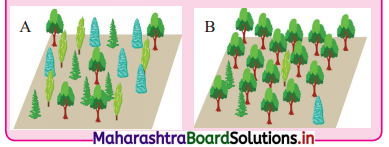
Answer:
- Size of species A and B are same. The number of species shown in both A and B are also same as both A and B have 4 different species each.
- Group A : In this species 4 different species are seen, but the density of the plants is not much. Group B also shows 4 different species. But two of these are in less number.
- Group A is more diverse that species B, but species B is showing more population of one species.
Question 2.
Observe the figure and answer the following questions.
(a) Identify the given instrument.
(b) What is its significance?
(c) Explain its working in brief.
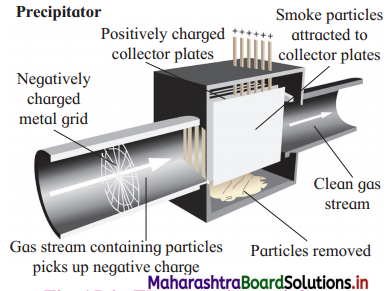
Answer:
(a) Electrostatic precipitator.
(b) This is an important equipment which is used to remove particulate matter like soot and dust present in industrial exhaust. It is capable of removing almost 99% particulate matter present in exhaust of a thermal power plant.
(c) (1) In Electrostatic precipitator, high voltage is applied which produces electric discharge.
(2) This discharge causes ionisation of air in the smokestack.
(3) As a result, the free electrons are formed.
(4) These electrons in the ionised air attach to the gaseous or dust particles moving up the stack.
(5) Negatively charged particles move towards the positive electrode and settle down there.
(6) They are then removed by vibrations of the electrodes and collected in the reservoir.
Question 3.
Observe the given diagram and answer the questions given below.

(a) What is the name of this equipment?
(b) What is the function of such equipment?
(c) Explain its working in brief.
Answer:
(a) Exhaust gas scrubber.
(b) Exhaust gas scrubbers are used to clean air by removing both dust and gases.
(c) The exhaust is passed through dry or wet packing material. When it is done, gases like SO2 are removed. For this purpose, the exhaust is passed through a spray of water or lime.
![]()
Question 4.
Observe the given diagram and answer the questions based on it.
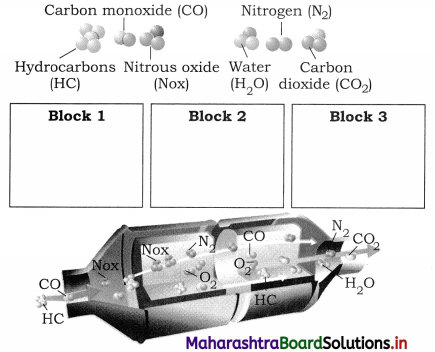
(a) Which apparatus is shown in the given diagram ?
(b) What is the function of this apparatus?
(c) What are the reactions that can take place in blocks 1, 2, and 3?
Answer:
(a) Catalytic converter.
(b) The harmful gases like CO and nitrogen oxides which are present in the automobile exhausts are removed by catalytic converters. Thereby, harmful effects of air pollution are reduced.
(c) In block 1 : Nitrogen oxides are present in the exhaust gases. They enter into reduction block of catalyst. The oxides of nitrogen react forming nitrogen and oxygen.
In block 2 : The exhaust gases enter the next block called oxidation block of the catalyst. Here, hydrocarbons and the newly formed oxygen react to form carbon dioxide.
In block 3 : The exhaust gases enter into last block from here the least harmful gases are released out.
Question 5.
Observe the graph and explain Alexander von Humboldt’s views about species richness and area relationship.
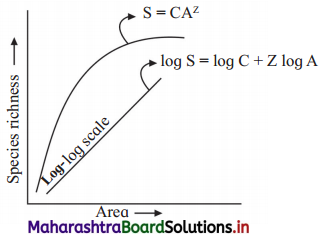
Answer:
- Scientists have tried to establish relationship between species diversity and the size of the habitat. It is considered that number of species present is directly proportional to the area.
- It is understood that larger areas may have more resources that can be distributed amongst the inhabitant species.
- Alexander von Humboldt observed that species richness does increase with the increase in area but only till a certain limit.
- For many species this curve is a rectangular hyperbola.
- If we consider S to be species richness, A as area under study, C as the Y intercept and Z as the slope of the line, this relationship can be described by the equation, log S = log C + Z log A.
- On logarithmic scale this relationship is a straight line, as observed in the figure above. For smaller areas, value of Z ranges between 0.1 to 0.2 regardless of species or region under study.
- But for the larger areas like the entire continents, slopes are closer to vertical axis i.e. steeper.
- This observation indicates that in very large areas, number of species found, increase faster than the area explored.
Question 6.
Explain the phenomenon of biomagnification by observing the diagram given below.
OR
Explain the phenomenon of biological magnification.
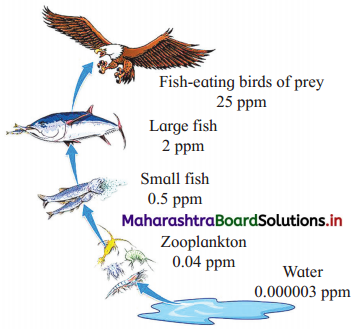
Answer:
- Some non-biodegradable substances like pesiticides or heavy metals have the tendency to accumulate in the tissues of living organisms.
- When such organisms are eaten by their predators, these pollutants enter the bodies of predators.
- At lower trophic level the concentration of such pollutant may be low, but when they are fed upon by their predator the amount of pollutant goes on increasing.
- As shown in the diagram there is only 0.000003 ppm DDT in the water. This DDT level is meagre but when zooplankton survive in this water, DDT concentration increases in their body and becomes 0.04 ppm.
- When many of these zooplankton are eaten by small fish, it rises to 0.5 ppm.
- In turn, the several smaller fish are eaten by a large fish and in it the concentration rises to 2 ppm.
- When such larger fishes are consumed by a bird, it receives maximum amount of DDT which might kill this bird.
- In this way, the DDT level shows biomagnification. Biomagnification is thus the phenomena of increase in the concentration of non-biodegradable substances according to the food chain or trophic relationships.
Long answer questions
Question 1.
What is biodiversity? Explain genetic diversity with suitable example.
Answer:
1. Biodiversity is the part of nature which includes the differences in the genes among the individuals of a species; the variety and richness of all plants and animal species at different scales in a space – local regions, country and the world; and the types of ecosystem, both terrestrial and aquatic, within a defined area.
2. Genetic diversity:
Genetic diversity is the intraspecific diversity in the number and types of genes and chromosomes present in different species.
- It also includes variation in the genes and their alleles in the same species. Variation within a population and diversity between populations that are associated with adaptation to local conditions.
- Genetic diversity or variability is essential for a healthy breeding population of a species.
- Genetic variations are changes in the allelic genes which lead to individual differences within species.
- Such variations help in the evolution. The chances of continuation of species in the changing environmental conditions are caused due to such variation and it allows the best organisms to get adapted to survive. Races and subspecies are formed due to genetic diversity.
- Examples of genetic diversity : (a) There are 1000 varieties of mangoes and 50.000 varieties of rice or wheat in India, (b) Rauwolfia vomitoria is a medicinal plant that secretes reserpine.
- This plant is inhabitant of different Himalayan ranges. There is variations in terms of potency and concentration of reserpine, from different locations.
Question 2.
Species richness goes on decreasing as we move from equator to pole. Explain.
Answer:
- In tropical regions, there are lesser climatic changes throughout the year and availability of plenty of sunlight.
- Moreover, in tropical areas there are lesser disturbances like periodic glaciations as compared to those seen in the polar regions.
- In tropical regions, there is a stability over millions of years which favoured speciation and hence there is more species richness.
- Also in tropical regions, there are lesser migrations which reduce gene flow between geographically isolated regions. This too favoured speciation.
- There is more availability of intense sunlight, warmer temperatures and higher annual rainfall in tropics. These factors have brought higher species richness in tropics.
- Constant climatic conditions and abundance of resources in tropical regions provide more food preferences for animals species.
- E.g. fruits are available throughout the year in rain forests, therefore variety of frugivorous animals are seen here, as compared to the temperate regions.
In short, species richness or diversity for plants and animals decreases as we move away from equator to the poles.
Question 3.
Explain Rivet Popper Hypothesis.
Answer:
- Rivet Popper hypothesis was given by Paul Ehrlich to emphasise significance of diversity.
- For explaining the hypothesis, he gave an analogy between aeroplane and ecosystem.
- As the rivets keep all parts of the aeroplane together, similarly, all species keep the diversity of an ecosystem in functional.
- Just as if one species gets extinct, initially not much of a problem will take place in an ecosystem, just as in case of a single rivet mission cannot cause problem in flight. However, if the same damage is continued, the turbulence will be experienced.
- When more rivets are popped out gradually, there will be a serious threat to the safety of the aeroplane.
- Also the rivets in key positions can cause serious situation. With same analogy he explained that if loss of species occurs, initially the problem will not be obvious but later if similar damage continues, there will be a threat to the ecosystem.
- Thus, there is a relationship between diversity and well-being of ecosystem which is not linear.
- Loss of key species causes threat in very short span of time by affecting food chains, food web, energy flow, natural cycles, etc. This will disturb the balance of the ecosystem.
Question 4.
Give various categories of endangered species explained by IUCN.
Answer:
Following are the categories of endangered species as explained by IUCN.
- Extinct (EX) : EX is added to species in which the last individual has died or is not recorded. So now on the earth not a single organism of this kind can be seen.
- Extinct in the Wild (EW) : This category contains those species whose members survive only in captivity.
- Critically Endangered (CR) : Critically endangered is a category containing those species that possess an extremely high risk of extinction with very few surviving members around 50 or so.
- Endangered (EN) : EN is added to a species that possess a very high risk of extinction as a result of rapid population decline of 50 to more than 70% over past three generations or the previous 10 years.
- Vulnerable (VU) : VU is a category containing those species that possess a very high risk of extinction as a result of rapid population decline of 30 to more them 50% over last three generations or the previous 10 years.
- Near Threatened (NT) : NT are species that are close to becoming threatened or may meet the criteria for threatened status in the near future.
- Least Concern (LC) : LC is a category containing species that are pervasive and abundant after careful assessment.
- Data Deficient (DD) : DD is a condition applied to species in which the amount of available data related to its risk of extinction, is lacking in some way.
- Not Evaluated (NE) In NE category any of the nearly 1.9 million species described by scientists are included, but not assessed by the IUCN.
![]()
Question 5.
What were the measures taken by Delhi Government to combat air pollution in Delhi?
Answer:
Following measures were taken to combat air pollution by Delhi Government:
- All the city buses were converted to run on CNG (i.e. compressed natural gas) by year 2002. CNG causes less pollution and is less expensive fuel.
- There was new fuel policy drafted by the Government.
- The norms were set to reduce sulphur and aromatic content of petrol and diesel.
- Engines of the automobiles were upgraded.
- Bharat stage emission standards (BS) were set. These standards are equivalent to Euro norms and have evolved on similar lines as Bharat Stage II (BS II) to BS VI from 2001 to 2017.
Question 6.
Why is Delhi worst polluted city as far as air pollution is concerned?
Answer:
- Delhi has colder weather during winters.
- There are stagnant winds which trap smoke from various sources like automobile exhausts and firecrackers.
- Many farms surrounding Delhi resort to burning crop stubbles.
- Even in the city garbage is lit.
- There is more dust on the roads.
- Automobile traffic is heavy and public transport systems were not efficient, till the metro was started.
Effects caused by this air pollution are as follows:
- Citizens suffered breathlessness and chest muscle contraction.
- The irritation in eyes, asthma and allergy were frequently reported.
Question 7.
What were the control measures taken by Delhi Government for combating air pollution ?
Answer:
Following measures were taken by Delhi Government:
- By 2002, all the city buses of Delhi were converted to CNG buses which now do not run on diesel.
- The new fuel policy was introduced and the norms were set to reduce sulphur and aromatic content of petrol and diesel.
- Upgradation of engines was done.
- Bharat stage emission standards (BS) were set which were equivalent to Euro norms.
- Bharat Stage II (BS II) to BS VI norms were given from 2001 to 2017.
- Administration took certain measures like closing educational institutions, suspending of construction or demolition work, undertaking vacuum cleaning of roads, etc.
- The polluting industries were penalized and Badarpur thermal power plant was temporarily closed down.
Question 8.
How is water polluted due to domestic sewage and Industrial Effluents?
Answer:
- When water is impure, it cannot be used for human consumption.
- Small amount about 0.1% impurities in water also makes the water polluted.
- In domestic sewage, there are dissolved salts such as nitrates, phosphates, other nutrients and toxic metal ions as well as organic compounds.
- Sewage also contains biodegradable organic matter and harmful bacterial and virus.
- Organic matter can be decomposed by bacteria and other microorganisms. But such water is not potable.
- Industrial effluents also contain harmful heavy metals and other solids.
- Solids can be easily removed from water but the dissolved salts cannot be separated.
- Biodegradable organic matter in sewage water is calculated by measuring Biochemical Oxygen Demand (BOD).
Question 9.
What is eutrophication? Describe the phenomena of eutrophication.
Answer:
- Eutrophication is the phenomena caused when a body of water becomes overly enriched with minerals and nutrients which induce excessive growth of algae.
- This process may result in oxygen depletion of the water body.
- Planktonic algae and algal bloom are the result of such nutrient-enriched water.
- Due to excessive growth of these plant species, the light in the lower layer of water is reduced.
- These plants perform photosynthesis during daytime but at night they compete with animal species for oxygen.
- There organic load of water body increases causing reduction in dissolved oxygen content.
- This results in death of fishes and other aquatic organisms. Once these dead bodies start decomposing in the water, there is more oxygen depletion.
- It then results in loss of species diversity.
- The water body which was once eutrophic now turns into stinking and turbid water body with coloured water. This is death of an ecosystem.
Question 10.
What are the two types of eutrophication? What is the main difference in them?
Answer:
- Natural Eutrophication and Cultural or Accelerated Eutrophication are two types of eutrophication.
- Natural eutrophication is caused due to natural processes. It is also called aging of a lake due to nutrient enrichment of water.
- It is a very slow and gradual process.
- Natural aging of lakes may take thousands of years, depending on the size of the lake, climatic conditions and other factors.
- Cultural or Accelerated eutrophication is caused due to human activities and chiefly due to pollution. Effluents from agricultural lands, industries and homes (household) cause such type of eutrophication.
- This phenomenon is called Cultural or Accelerated eutrophication.
- Due to excessive growth of algae there is lesser amount of dissolved oxygen for aquatic organisms, especially during night time. Due to this death of fish and other aquatic organisms take place.
- The dead bodies of aquatic organisms decompose causing further depletion of the dissolved oxygen.
- This results into complete collapse of the ecosystem of water body.
Question 11.
Comment on deforestation status of the world and its major effects.
Answer:
I. Deforestation status of the world:
- Forest area has declined all across the world in the past three decades. But in last decade, it is the reverse trend as the rate of forest loss has declined due to the growth of sustainable management.
- Global Forest Resources Assessment 2020 (FRA 2020) has given the figures of the rate of forest loss in 2015-2020. It is said to be declined to 10 million hectares (mha), reducing from 12 million hectares (mha) in 2010-2015.
- The FRA 2020 was released by the United Nations Food and Agriculture Organization (FAO) on May 13, 2020. It has examined the status of, and trends in, more than 60 forest-related variables in 236 countries and territories in the period 1990-2020.
- The world lost 178 mha of forest since 1990. However, the rate of net forest loss decreased substantially during 1990-2020 due to a reduction in deforestation in some countries, plus increases in forest area in others through afforestation and the natural expansion of forests.
- The rate of net forest loss declined from 7.8 mha per year in the decade 1990-2000 to 5.2 mha per year in 2000-2010 and 4.7 mha per year in 2010-2020.
- Among the world’s regions, Africa had the largest annual rate of net forest loss in 2010-2020, at 3.9 mha, followed by South America, at 2.6 mha.
- On the other hand, Asia had the highest net gain of forest area in 2010-2020, followed by Oceania and Europe.
- The world’s total forest area was 4.06 billion hectares (bha), which was 31% of the total land area. This area was equivalent to 0.52 ha per person, the report noted.
- The largest proportion of the world’s forests were tropical (45%), followed by boreal, temperate and subtropical.
- More than 54% of the world’s forests were in only five countries – the Russian Federation, Brazil, Canada, the United States of America and China. The area of naturally regenerating forests worldwide decreased since 1990, but the area of planted forests increased by 123 mha.
![]()
The rate of increase in the area of planted forest slowed in the last ten years.
(Source : https : //www.downtoearth.org.in/ news/forests/deforestation-rate-globally- declined-between-2015-and-2020-fao- report-71107)
II. The effects of deforestation:
- Increased concentration of COa in the atmosphere.
- Trees hold lot of carbon in their biomass which is lost with deforestation.
- Loss of biodiversity due to habitat destruction.
- Disturbances in hydrologic cycle.
- Soil erosion and desertification in extreme cases.
